Philadelphia Public Workers Reach Deal to End Strike

© Matt Slocum/Associated Press


© Matt Slocum/Associated Press


© Matt Slocum/Associated Press


Ukraine’s military carried out 115 “Deep Strike” long-range drone missions against Russian forces last month, Commander-in-Chief Oleksandr Syrskyi reported. The campaign is a core part of Ukraine’s strategy to disrupt enemy logistics and production far from the frontlines.
Syrskyi said in the update after a meeting of the Headquarters of the Supreme Commander-in-Chief:
“[D]uring June, Ukraine’s defenders carried out 115 fire tasks in the Deep Strike direction. Our artillery struck 2,864 enemy targets,” Syrskyi posted on his official channels.
Militarnyi notes he did not specify whether this included only targets inside Russia or also in Russian-occupied areas of Ukraine.
The Commander-in-Chief stated that Ukrainian troops are using both symmetric and asymmetric tactics to resist Russia, while striking military and logistical targets. He said Ukrainian forces are striking Russian military and logistics targets deep inside Russia, weakening its production potential.
Last month, Ukraine’s Deep Strike campaign included several major incidents.
Ukrainian drones targeted the Marinovka airfield in Russia’s Volgograd Oblast, reportedly destroying three Su-34 fighter-bombers and two more partially damaged.
Ukrainian drones hit two chemical plants named Azot, both producing materials used in explosives and rocket fuel—one in Tula Oblast, another in Stavropol.
Russian sources also published evidence of Ukraine’s use of the jet-powered Peklo drones, which destroyed a vehicle bridge across the Aidar River in occupied Luhansk Oblast.
Other targets in June included the Alabuga drone factory in Tatarstan, the Buturlinivka airbase in Voronezh Oblast, an airbase’s fuel depot in Engels.
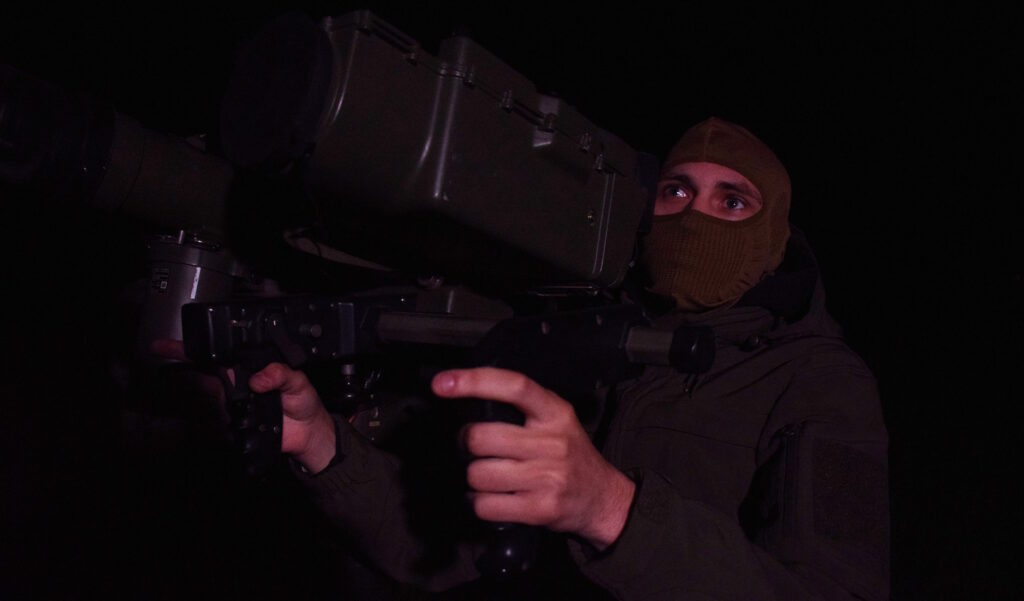

Ukraine responds to Russia’s escalation with deep-strike counterattacks. As Russia tries to stretch the front and break Ukrainian defenses, Ukrainian forces are hitting back hard: in June alone, Ukrainian artillery completed 115 fire missions, striking 2,864 targets, says Ukrainian Commander-in-Chief Oleksandr Syrskyi.
Over the past day alone, nearly 188 combat clashes have occurred between Ukrainian and Russian troops. Moscow has lost over 1,000 soldiers and dozens of artillery systems in a single day. Diplomatic efforts remain stalled, as Russia reiterates demands for Ukraine’s demilitarization and government change, rejecting ceasefire proposals. The war continues with no immediate prospect for peace.
The priority for June was stabilizing the frontline and holding off Russian offensives in Donetsk and Sumy oblasts, where Moscow has concentrated its main strike forces.
“Unfortunately, the enemy holds a significant advantage in manpower and equipment,” Syrskyi admits.
He notes that Russia has increased its use of drones and missiles by 1.6 times. In response, Ukraine’s Defense Forces struck around 4,000 targets, including inside Russian territory.
“We are forced to seek new tactical and technological solutions,” the general emphasizes.
Key Ukrainian priorities now include developing air defense, expanding drone strike capabilities, modernizing equipment, and reforming mobilization and recruitment.
Amid unstable international support, Ukraine is pursuing alternative arms supply routes, expanding repair capacities, and embracing asymmetric tactics to disrupt Russia’s summer offensive.
Earlier, Euromaidan Press reported that Kyiv started producing 200,000 drones per month, a tenfold increase compared to 2024.


Ukrainian forces have created a corridor for drones and missiles into Crimea by recently disabling key Russian radar systems near Cape Tarhankut, a military expert says. The destruction of the Nebo-M system has left the western part of the Russian-occupied peninsula uncovered, opening a clear path for future strikes.
A recent Ukrainian drone attack destroyed valuable Russian radars and a command center for the advanced Nebo-M system.
As reported by RFE/RL’s Krym.Realii project, a former Ukrainian officer from Crimea stated that recent radar strikes created not just a gap but a fully functional route into the peninsula. The expert emphasized that the radar modules destroyed were part of Russia’s Nebo-M complex—systems capable of detecting aerial and ballistic targets at long distances.
These stations once covered areas “from Cape Tarhankut to Kyiv and Kharkiv in the north, Kamianets-Podilskyi in the northwest is about 590 km, to Sievierodonetsk in the northeast — 600 km.” With them now neutralized, the expert confirmed that a large swath of airspace has been left unprotected.
“A real corridor now exists for Ukrainian drones and missiles,” he said.
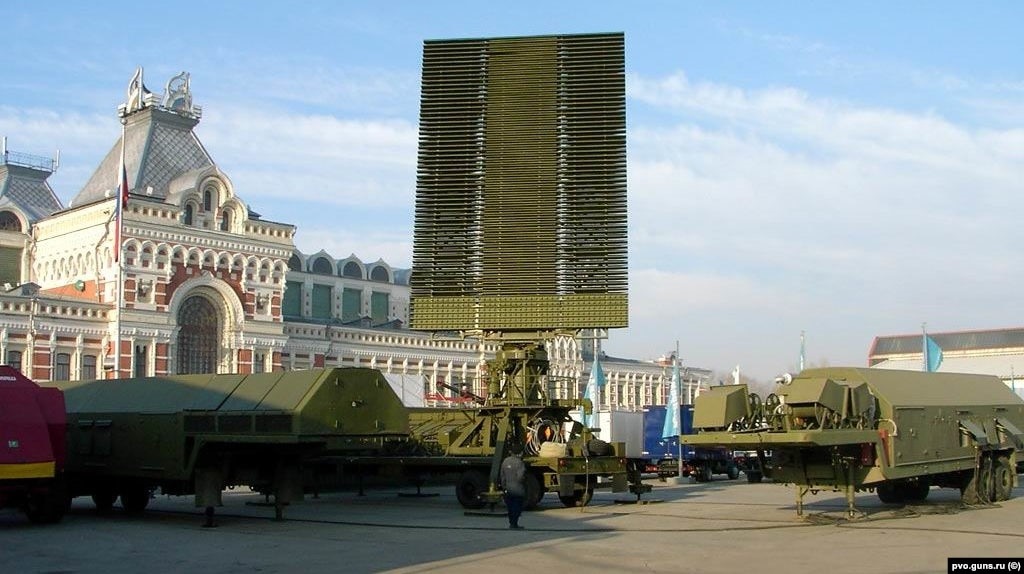
Video of the attack analyzed by Krym.Realii shows a hexacopter drone taking off from an unmanned surface vessel close to the shore of Cape Tarhankut. While its exact type remains unidentified, the drone closely resembles Ukraine’s Baba Yaga strike drones—a term used by Russian forces for the Vampire model developed by SkyFall.
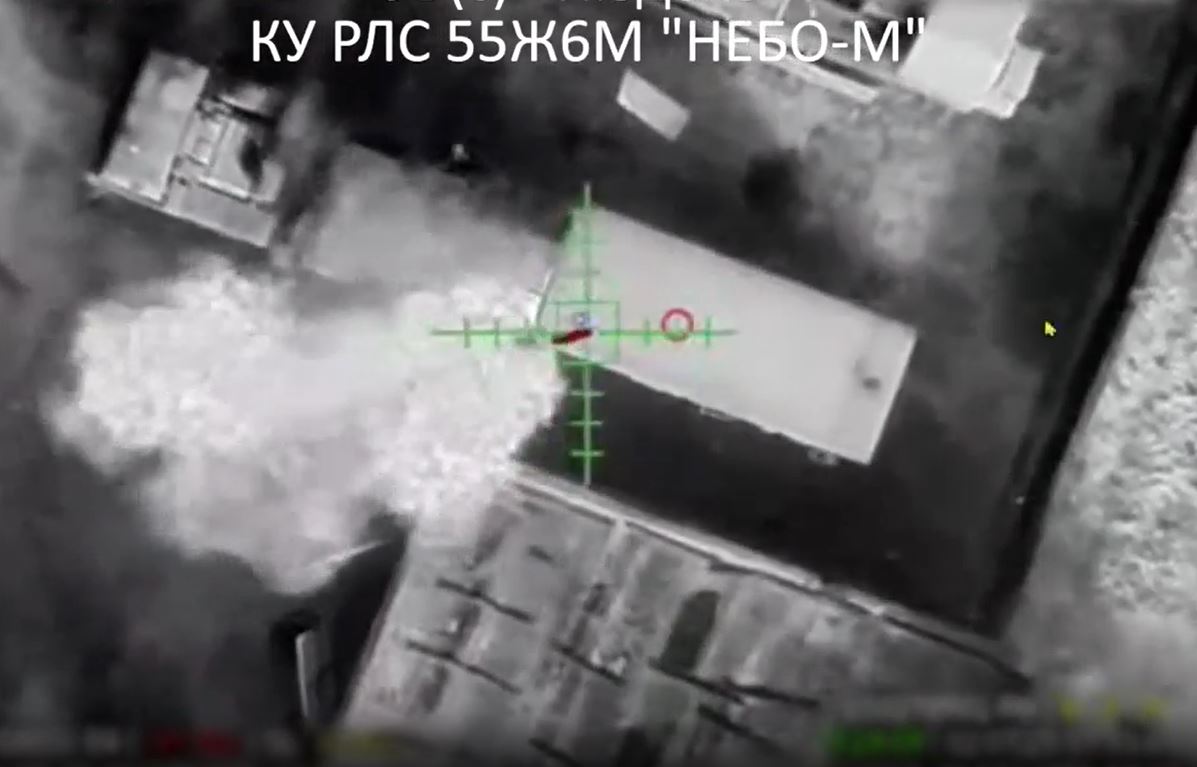
These drones, commonly used for nighttime missions, carry thermal imagers and payloads up to 15 kg. Their loadout includes mortar rounds, anti-personnel grenades, and thermite devices.

He also noted that the drones were controlled on frequencies between 700 and 900 MHz—outside the range of local Russian jamming systems operating at 1200 to 1600 MHz. This allowed them to bypass electronic warfare defenses in the area.
This and other recent drone operations in Crimea also highlighted a shift in Ukraine’s drone warfare tactics. Previously, Ukraine showcased Magura sea drones—specifically the V5 strike model, the W6P multifunctional platform, and the V7 drone armed with either missiles or machine guns.
In a military documentary, two new drone boat variants appeared. One vessel carried four launch-ready FPV drone containers and used a traditional propeller engine instead of waterjets. These unmanned boats likely transported the hexacopter drones used in the attack on Tarhankut.
Why Ukraine must bet it all on Putin’s greatest weakness—Crimea
With radar systems in both Saky and Tarhankut eliminated, experts now consider the Ukrainian drone corridor to Crimea active. The expert noted that the absence of coverage from the west and northwest leaves the peninsula vulnerable to repeated precision strikes.
“The radar strike opened a window of opportunity,” he said. “From the sea or the air, that entire sector is now blind.”
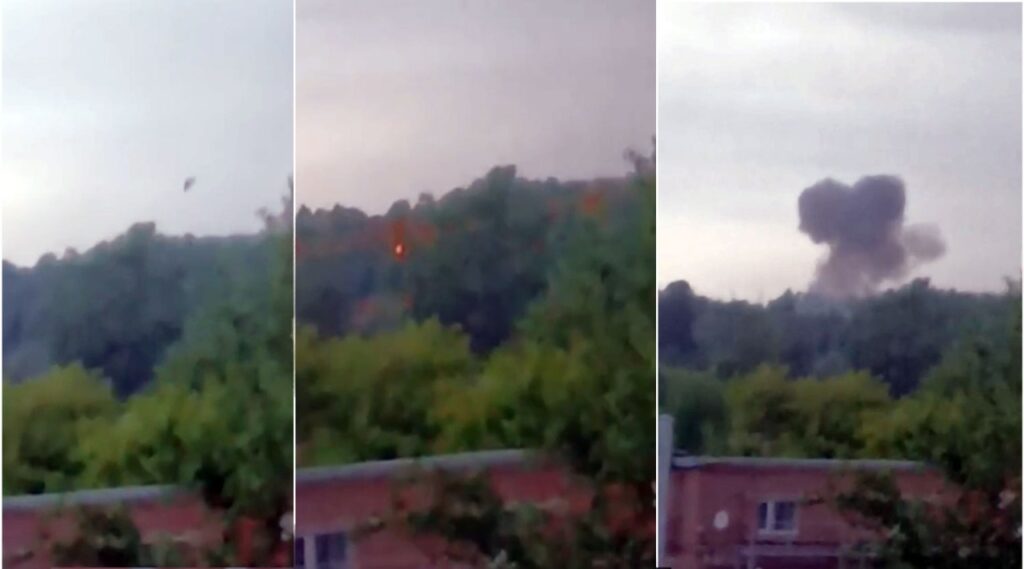

Ukraine hits a Russian ammunition supply-chain plant near Moscow in a deep drone strike inside Russia on 7 July. Russia’s Ministry of Defense claimed it downed 91 drones, including eight over Moscow Oblast. Despite those claims, residents of Krasnozavodsk and Sergiev Posad in the region reported about ten loud explosions.
The locals told the Russian pro-Kremlin Telegram channel Shot that drones flew low before the blasts. Locals believe the Krasnozavodsky Chemical Plant was the target. Another Russian Telegram channel, Astra, confirmed reports from local chats in Krasnozavodsk, where users described an attack on the chemical plant. Russian authorities have not officially confirmed any damage.
Ukrainian channel Exilenova+ shared footage of the attack and also confirmed that Ukrainian drones hit the Krasnozavodsky Chemical Plant. The channel geolocated multiple impact points within the facility and concluded that the strike targeted several areas of the plant.
Ukraine hits Russian ammunition supply plant near Moscow in deep drone strike
— Euromaidan Press (@EuromaidanPress) July 7, 2025
Locals heard about 10 blasts. The Krasnozavodsk chemical plant is linked to Grad, Uragan, and Tornado-G rocket systems.
Read more: https://t.co/zYhmeFmMAx pic.twitter.com/xbvJ11EnqC
Andrii Kovalenko from Ukraine’s National Security and Defense Council also confirmed the same target, saying the plant produces explosive materials, powder, and components for missiles and munitions.
Exilenova+ added that the plant supplies Russia’s Ministry of Defense with munitions like signal cartridges, anti-tank missile igniters, detonators, thermite blocks, and explosive charges.
According to the same source, the plant repairs and modernizes Russia’s multiple rocket launchers, including Uragan, Grad, and Tornado-G. As of 2023–2024, it had assembled and upgraded full systems and their parts.
One of the drone strikes likely hit a newer workshop, Exilenova+ reported, noting that the factory plays a critical role in maintaining Russia’s artillery capabilities.
Exilenova+ stated that Ukraine used FP-1 drones in the strike. The drone reportedly carries a larger warhead—than Liutyi, usually used in such attacks—and may now be in serial production. The channel called the attack “great news,” highlighting the FP-1 as a powerful addition to Ukraine’s long-range strike capability.
The Russian Ministry of Defense claimed drones were also shot down not only in Moscow Oblast, but also over many other oblasts. According to their data, 20 drones flew over Belgorod Oblast, 14 over Kursk, and 9 over Lipetsk. Eight were reported over both Bryansk and Voronezh oblasts, and seven over the Black Sea. Three drones each appeared over Novgorod, Tver, Tambov, and Leningrad oblasts. Two more were intercepted over Oryol Oblast, and one each over Vladimir Oblast, Krasnodar Krai, and occupied Crimea.
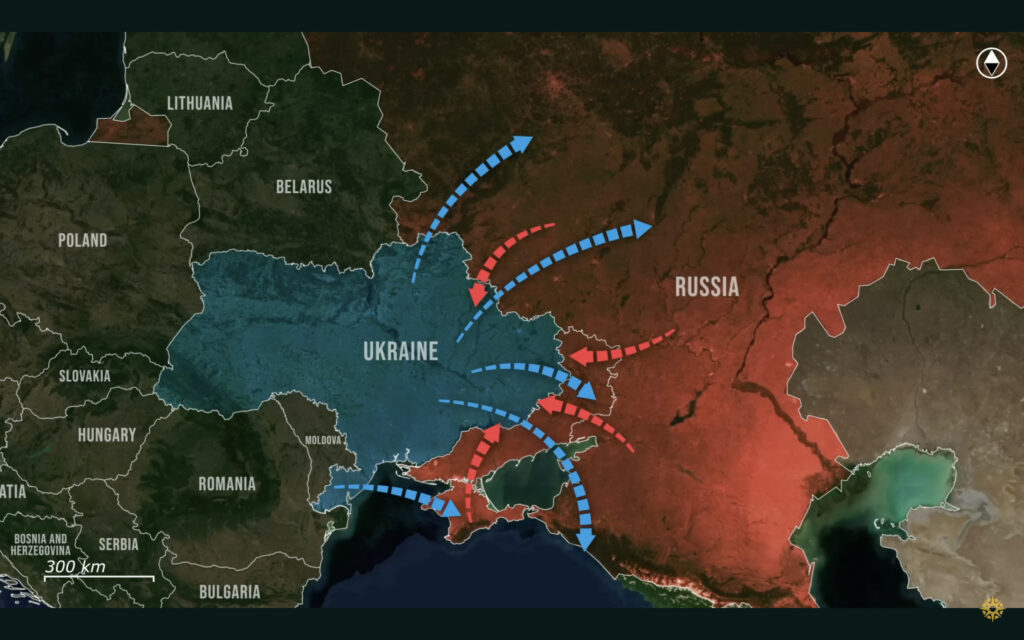

Today, there is big news from eastern Ukraine.
Here, as Russians are on the brink of kicking off their multi-front summer offensive, Ukrainians are launching a summer campaign of their own, targeting key Russian military and logistical assets. By using missiles and long-range drones, Ukraine aims to deal as much damage as possible at the most important moment, right before the Russians accumulate enough forces and equipment to overwhelm the Ukrainian army.
In one of the most significant recent operations, Ukrainian forces successfully targeted the headquarters of Russia’s 8th Combined Arms Army in Russian controlled Donetsk city. Using Storm Shadow missiles combined with drones, Ukrainians drained Russian air defenses before wreaking utter destruction on the massive Russian headquarters.
According to reports by local media and residents, the headquarters building was razed down to the basement, whole groups of killed Russian personnel being carried out continuously. Among those confirmed killed was one of the main targets, Colonel Ruslan Goryachkin, commander of the 8th Guards Combined Arms Army, who has absolute control of all Russian forces operating from Velyka Novosilka to Pokrovsk, and is credited with the only significant gains Russians have made since the start of 2024.
His elimination will have a massive effect on Russian preparations and later offensive operations, as the Russians stand before the largest operation they have launched since the start of the invasion over 3 years ago.

Simultaneously, Ukraine conducted an extensive drone operation in occupied Luhansk, highlighting their multi-layered strike approach. More than 20 drones struck Russian logistics facilities overnight, causing extensive fires throughout the city. Although Russian officials claimed 35 out of 40 drones were intercepted, footage contradicts this, showing massive fires at a critical oil depot and far more than 5 drones striking Russian targets.

Head of Ukraine’s Center for Countering Disinformation, Andrii Kovalenko, emphasized that Russian logistics in temporarily occupied Luhansk are burning, underscoring Ukraine’s intent to systematically dismantle the infrastructure supporting Russian frontline operations.
These operations come as Russia gears up for an extensive offensive spanning multiple fronts, from Sumy to Kherson, Donetsk, and Zaporizhzhia. Recognizing its numerical disadvantage in frontline personnel, Ukraine must rely on precisely dismantling Russian combat capabilities before its offensive can gain momentum.
By targeting logistics hubs, command centers, and ammunition depots, Ukraine aims to introduce critical delays and attritional losses to Russian preparations. Each delay significantly benefits Ukraine, allowing additional time to fortify defenses and shortening Russia’s viable window for success due to the limited timeframe with favorable weather conditions.

Moreover, forcing Russia into launching premature assaults with insufficient preparation substantially weakens its operational effectiveness, making those sent on the attack vulnerable to Ukraine’s experienced drone operators and artillery units and unable to breach the defense lines.
Ukraine’s strike campaign also continues to disrupt Russian rail logistics, vital to sustaining offensive operations. As you remember, Ukrainian drone operators have repeatedly hit critical railway supply points in Zaporizhzhia Oblast, significantly hampering Russian resupply efforts.
Additionally, Ukraine’s cyber specialists temporarily disabled key Russian Railways services in Voronezh, crippling logistics management in the north. Complementing this, Ukrainian security services have coordinated several direct sabotage operations, igniting a freight locomotive in Saratov and blowing up a railway in Voronezh, demonstrating Ukrainian sabotage operations within Russian territory.
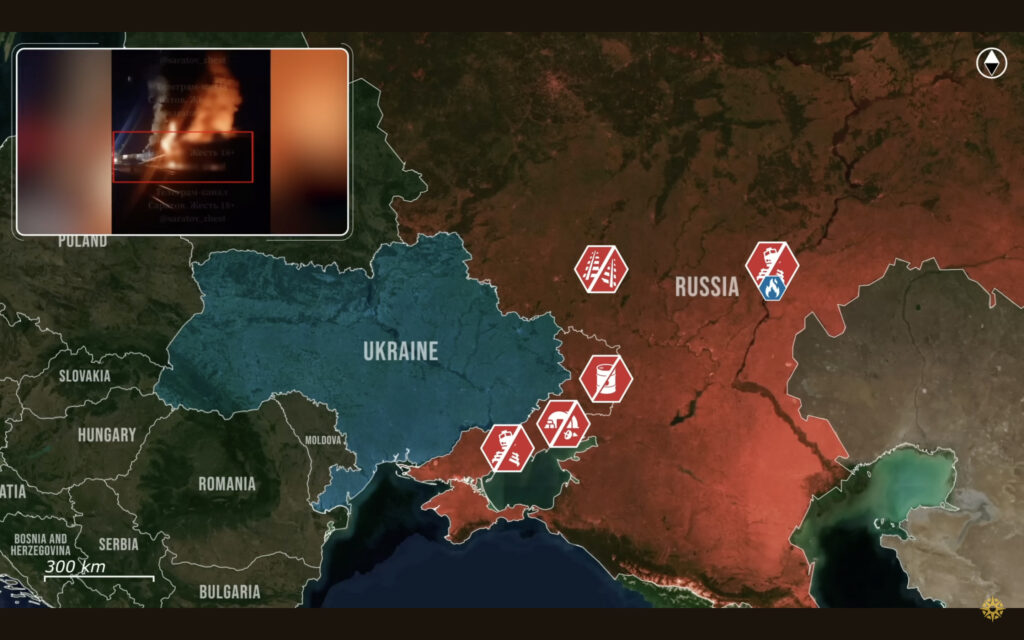
Ukrainians have also targeted a key Russian military ammunition depot in Zabaykalsky Krai, near Velikaya Tura, causing large explosions to go off for hours. While Russian officials attempted to downplay the event, eyewitness accounts report dozens of secondary detonations, pointing toward another successful Ukrainian sabotage operation.
In Rostov oblast, Ukrainian drones targeted the strategically important Atlas depot facility, part of Russia’s state reserve system, responsible for stockpiling and distributing fuel, lubricants, food, and technological equipment essential for sustained combat operations, with satellite data further confirming large-scale fires that raged at the site.

Overall, Ukraine’s approach lies in offsetting Russia’s numerical advantage by identifying, tracking, and targeting critical Russian military logistical assets. These precise operations maximize damage to enemy capabilities while effectively committing Ukraine’s limited high precision weaponry.
Meanwhile, Ukraine continues to advance its drone technologies, enhancing long-range capabilities and increasing monthly production rates. This systematic approach allows Ukraine to sustain and amplify pressure, effectively undermine Russian preparations, and critically weaken their ability to launch a coordinated large-scale summer offensive. This means that Ukrainian soldiers can more effectively counter Russian assaults, shifting the battlefield dynamics in Ukraine’s favor.
In our regular frontline report, we pair up with the military blogger Reporting from Ukraine to keep you informed about what is happening on the battlefield in the Russo-Ukrainian war.


Russian forces launched coordinated strikes across multiple Ukrainian regions on the night of 4-5 July, hitting civilian targets with drones and artillery. The attacks wounded at least 16 people, with children among the casualties.
According to Ukraine’s air force, Russian forces launched 322 strike drones during the night, with Ukrainian air defense forces neutralizing 292 of them.
The heaviest damage occurred in Chuhuiv, a city in Ukraine’s eastern Kharkiv Oblast near the frontline, where what officials called a massive drone barrage wounded 11 people, including a 10-year-old boy and 14-year-old girl.
The attack set off a major fire at one unspecified city facility that rescue teams were still fighting hours later, according to the State Emergency Service. Another drone hit the local post office and an abandoned building nearby.


How extensive was the damage? The postal strike sparked a second fire that spread to nearby homes and cars before firefighters contained it. Regional military administration head Oleh Syniehubov confirmed the casualty figures.

But Chuhuiv wasn’t the only target in Kharkiv Oblast. Russian forces also shelled Kupiansk the same day, wounding two more people who are now receiving medical treatment.
Kupiansk saw two apartment buildings hit, along with a school, two private homes, and a store.
Overnight, Russian forces also targeted Dnipropetrovsk Oblast, located close to the frontline, with kamikaze drones and artillery, according to regional head Serhii Lysak.
Air defenses shot down five drones, but falling debris still wounded three people in Dnipro district—two women and one man. The debris destroyed five country houses entirely. A 43-year-old man was treated as an outpatient for his injuries.
The strikes damaged an agricultural enterprise, private home, outbuilding, hair salon, and car across the region.
Donetsk Oblast that is largely occupied by Russia faced its own barrage. Russian shelling sparked four separate fires that rescue teams had to extinguish while under constant threat. The strikes damaged a store, an administrative building, and an enterprise facility, while also igniting a fire at a wheat field.


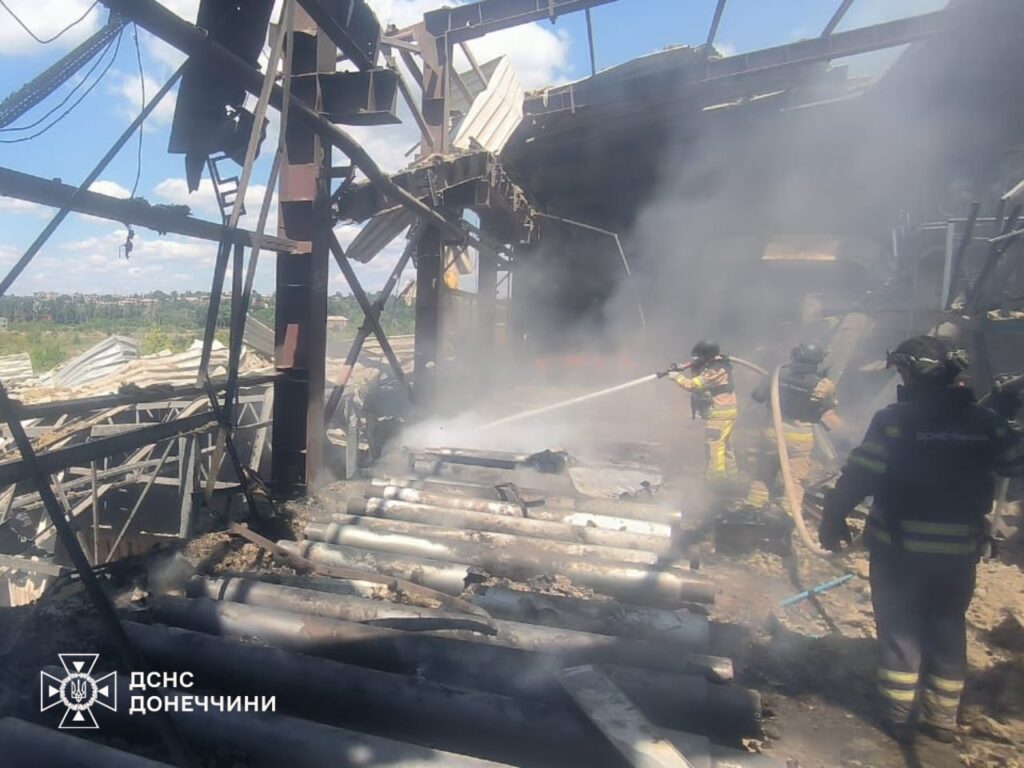



A Ukrainian attack on 4 July targeted a key Russian defense facility in the city of Azov, Rostov Oblast, about 200 km from the frontline. The Azov Optic-Mechanical Plant, which manufactures critical electronic components for Russian missiles and armored vehicles, was hit by multiple drones in a bold daylight assault. The extent of the damage is currently unknown.
According to Militarnyi, the attack occurred on the morning of 4 July when Ukrainian strike drones launched an assault on the Azov Optic-Mechanical Plant, part of Russia’s Tactical Missile Armament Corporation.
Social media footage showed fixed-wing UAVs diving toward the site, followed by explosions and visible smoke. One of the drones bore a delta-wing “Shahed-like” structure, suggesting the use of an unknown new UAV model.
The original Shaheds are Iranian-designed long-range explosive drones that Russia uses in its daily attacks on Ukrainian cities. They are easily recognizable by their rounded nose and triangular, delta-shaped wings.
Ukrainian Telegram channel Exilenova+ posted an image, showing a delta-wing drone with the caption:
“Rostov. Likely a new UAV from Ukraine’s Defense Forces.”
Later, the same channel shared videos capturing different UAV types, including a well-known Ukrainian drone and a delta-wing aircraft believed to be a new model.
“Azov was attacked by several types of birds,” Exilenova+ commented. “We see an FP-1 pass over, and then, probably, the strike of that same ‘new’ drone.”
Militarnyi noted that “Delta-wing drones are fairly common, but they are rarely used by those attacking the aggressor country. What specific model was used remains unknown at this time.”
Russian authorities initially claimed their air defense forces intercepted the drones. Russian Telegram channel Astra reported that at least ten UAVs or their debris “fell” on the factory grounds. The local emergency services confirmed the site was impacted on 4 July.
Yury Slyusar, acting governor of Rostov Oblast, stated that evacuation efforts were underway due to widespread damage from UAV debris, claiming that the attack damaged residential buildings. While initial reports suggested no injuries, Slyusar had also stated that one woman killed in the overnight attack.
The Russian Ministry of Defense claimed that air defenses downed 26 drones over Rostov Oblast overnight on 4 July. In Shakhty, a UAV strike allegedly caused a transformer substation to shut down, leaving around 2,000 homes — with more than 6,000 residents — without power. Buildings near the substation also suffered window damage.
The Azov Optic-Mechanical Plant is a core producer of high-precision electronics, optical, and thermal imaging equipment for Russia’s military. As detailed by Exilenova+, it manufactures lenses, prisms, radar homing heads, and control systems used in tanks, infantry fighting vehicles, naval systems, and aircraft.
Ukraine’s Center for Countering Disinformation, under the National Security and Defense Council, confirmed the strike. Its head, Andrii Kovalenko, emphasized that the plant produces “eyes” for Russian military hardware, including fire control systems and rangefinders. He stated,
“Despite a difficult night (a reference to Russia’s massive missile and drone attack on Kyiv, – Ed.), there is good news. In Russia, targets were hit in Moscow and Rostov oblasts. The Azov Optic-Mechanical Plant was struck.”
The facility has been under US sanctions since March 2022 due to its role in the Russian war effort. It is also sanctioned by Canada, Switzerland, the European Union, New Zealand, and Ukraine. The Ukrainian Defense Intelligence’s War & Sanctions project has identified foreign-origin components at the site, including machinery from Taiwan, South Korea, and Switzerland.


Ukrainian drones struck a critical military-linked facility in Russia’s Moscow Oblast that produces thermobaric warheads for Shahed drones, the Ukrainian General Staff reported on 4 July. The strike ignited a fire and caused visible black smoke, while Russian local authorities acknowledged drone-related damage in the area.
According to the General Staff of the Armed Forces of Ukraine, units from the Unmanned Systems Forces, together with other Defense Forces, hit the JSC “Scientific Research Institute of Applied Chemistry” in Sergiev Posad, Moscow Oblast.
The report emphasized that the facility is currently involved in the production of thermobaric warheads for Shahed-type UAVs and plays a vital role in Russia’s ongoing war against Ukraine.
“It is confirmed that our strike assets reached the target directly. A fire and heavy smoke were recorded in the area of the facility,” the Ukrainian military stated.
The effects of the strike are still being assessed, according to the report.
On the morning of 4 July, Oksana Yerokhanova, head of the Sergiev Posad city district, confirmed that drones had attacked the town. She reported that a fire broke out at an electrical substation, leaving six neighborhoods without power.Yerokhanova also reported that two men were allegedly injured during the incident.
Ukrainian Telegram channel ExileNova+ geolocated the black smoke column to Substation No. 94 “Zagorsk” (110/35/6 kV), believed to be part of the “Scientific Research Institute of Applied Chemistry.”
Additional footage shared by Exilenova+ shows Liutyi drones flying past the smoke column and striking separate locations.
Despite claiming the destruction of 48 drones overnight, the Russian Ministry of Defense did not mention any incidents in Moscow Oblast in its public statements.


Ukrainian forces launched a successful maritime drone strike overnight on 2 July, destroying a high-value Russian Nebo-M radar complex near the village of Mayak on northwestern Crimea’s Tarkhankut Cape. The assault, captured on video and confirmed through satellite imagery, further highlights Ukraine’s evolving drone capabilities and further depletes Russian air defense systems on the occupied peninsula.
According to Krymsky Veter, a Ukrainian military-linked Telegram channel, Ukrainian naval drones carried out the attack, striking two Nebo-M radars and their command cabin. Footage, shared by the Krymskyi Veter and X account @bayraktar_1love, shows a quadcopter launch from a maritime drone platform and dropping munitions directly on their targets — a capability that had not been publicly demonstrated before.
The channel did not mention the unit responsible for the operation, but the video footage features the emblem of the Ukrainian Armed Forces, along with insignia that may belong to the 73rd Naval Special Operations Center or the Special Operations Center South — Ukraine’s naval spetsnaz unit within its Special Operations Forces (SSO).
The @bayraktar_1love’s version of the footage includes drone launches:

Krymsky Veter shared a screenshot from a Russian milblogger channels reacting to the incident on 2 July, reading:“We don’t want to comment on today’s attack on Tarkhankut, because we’d have to swear,” indicating clear frustration among Russian sources.
The source did not specify the target or results but stated that Ukrainian drones were reportedly launched from a maritime drone, and that a relay transmitter over the sea was extending the signal. It also noted the drones allegedly operated on 700–900 MHz frequencies, and hinted on the incompetence of Russian electronic warfare system operators who failed to jam the incoming drones, asking:
“Turns out (or didn’t turn out) that EW systems with frequencies of 1200–1600 MHz don’t neutralize them? Maybe because it’s 5 watts per band? Or maybe it has another purpose?”
Krymsky Veter provided further detail the next day, 3 July, confirming the destruction of the Nebo-M complex near Mayak village. The Nebo-M is a mobile radar system capable of detecting aerodynamic and ballistic objects at medium and high altitudes. The complex includes the meter-band radar module Nebo-SVU, the decimeter-band module Protivnik-GE, and a command cabin — all reportedly eliminated in the strike. Additionally, the system may also include a centimeter-band radar.
According to later update by Krymsky Veter, Ukrainian forces employed naval drones and strike UAVs “Lazar”. A 55Zh6M “Nebo-M” radar system was destroyed, consisting of three components:
The equipment is estimated to cost around $100 million, underlining the significance of the target. The detection radius of the Nebo-M complex spans up to 600 km, with the ability to track up to 200 targets simultaneously.
A later update from Krymsky Veter, citing satellite imagery, confirmed burn marks on the eastern outskirts of Mayak village, matching the location of the destroyed radar complex.


Ukrainian defense forces have destroyed or damaged nearly half of the Russian drone pilot positions identified along the Zaporizhzhia frontline, according to the Main Directorate of Intelligence (HUR) of the Ministry of Defense.
HUR stated that Ukrainian units located 90 positions and residential locations used by Russian operators of strike and reconnaissance drones along the Zaporizhzhia front. Of those, 42 sites have been destroyed or damaged, according to the report.
The effort is part of a comprehensive counter-drone operation code-named Dronocide, focused on targeting and eliminating Russian UAV operator infrastructure.
The campaign is being executed by the Department of Active Operations of HUR, the Air Force Command, the 128th Separate Mountain Assault Zakarpattia Brigade, the 128th Separate Territorial Defense Brigade, the Flight Skull unit from the Drone Systems Forces, and the Operational-Tactical Grouping of Forces Zaporizhzhia along with the Operational-Strategic Grouping Tavria.
The Dronocide operation has evolved into what HUR described as a “month of annihilation” for Russian drone pilots. Coordinated Ukrainian forces have launched precision strikes on positions housing enemy drone crews, eliminating threats to Ukrainian front-line troops and infrastructure.
HUR released dramatic video footage showing the moments Russian positions were “turned into molecules” during some of the targeted bomb and drone strikes.
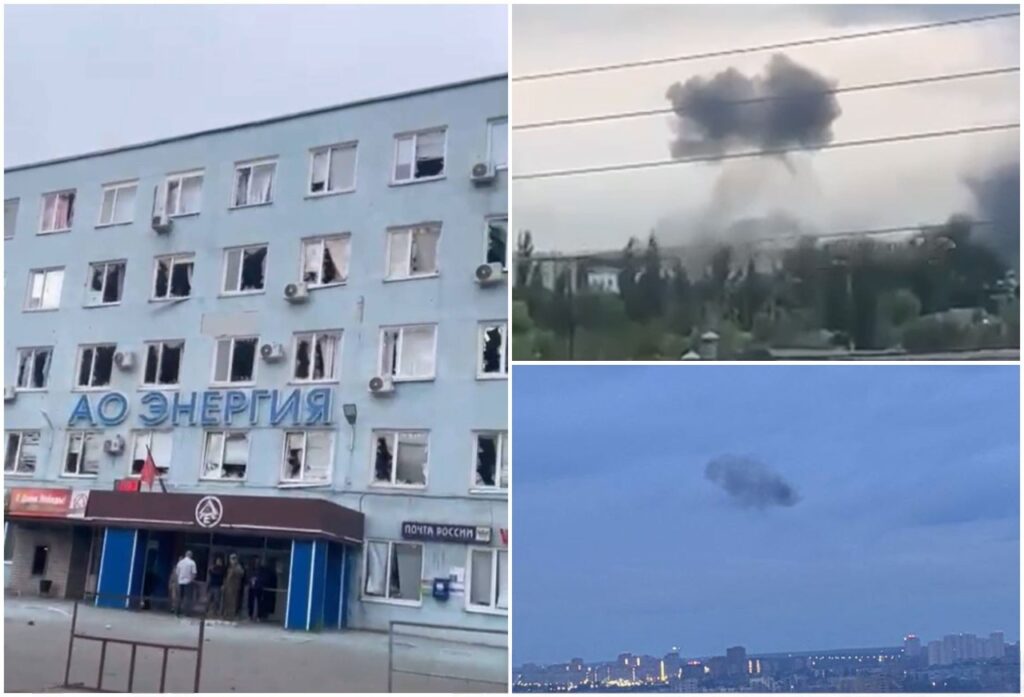

In the early hours of 3 July, Ukrainian drones targeted multiple sites across four Russian oblasts and occupied Crimea, including a confirmed strike on the Energiya defense battery factory in Yelets and an attempt to strike the military airfield in Lipetsk. Local officials and eyewitness footage confirm explosions and fires, while Moscow claims to have downed 69 UAVs in total.
According to eyewitness footage published news Telegram channels, Ukrainian drones hit the Energiya plant in Yelets, Lipetsk Oblast. The factory is the largest producer of sealed lead-acid, nickel-cadmium, and lithium-ion batteries for Russia’s military, including systems ranging from UAVs to intercontinental ballistic missiles.
Russian Telegram channel Astra reports that a drone struck the factory’s parking area, igniting several vehicles and damaging nearby infrastructure. Explosions and heavy smoke were seen in the area. The Lipetsk Oblast Governor Igor Artamonov confirmed a drone fell near an enterprise parking lot, causing a fire and triggering the evacuation of nearby plant workers. Footage of this fire also shows that windows were shattered in the nearby building of the plant.
One of the clips, featuring the black smoke rising from the parking lot, captured an additional strike on the plant.
Drones target Russia's military-grade batteries maker and airbase
— Euromaidan Press (@EuromaidanPress) July 3, 2025
Energiya factory in Yelets was last hit in May. In Lipetsk, drones seem to have been intercepted before reaching the airfield.https://t.co/q8IyqvZFCLTG/Exilenova+ pic.twitter.com/GANUZnyEFs
Local authorities did not provide specifics on the airfield impact, but explosions were reported in Lipetsk city and across the oblast.
Artamonov claimed that drone fragments allegedly hit a detached house, killing one civilian and injuring two more. Another UAV ostensibly hit a section of an under-construction apartment building in Yelets.

Voronezh Oblast Governor Alexander Gusev stated via Telegram that drone fragments damaged the roofs of two detached houses in Voronezh. The strike also knocked down a power line, leaving a local village without electricity.
The Russian Ministry of Defense stated in the morning that air defense systems allegedly shot down 69 Ukrainian drones: 27 over Belgorod Oblast, 22 over Voronezh, 10 over Lipetsk, 8 over Kursk, and 2 over occupied Crimea.
Despite the scale of the incident, Belgorod Governor Vyacheslav Gladkov and acting Kursk Governor Alexander Khinshtein made no public comment on the attacks.
Astra reported that Russia’s Federal Air Transport Agency temporarily restricted flights at airports in Tambov, and Samara amid the drone threat.
Separately, acting Tambov Oblast Governor Yevgeny Pervyshov reported a fire at an unspecified enterprise in the city of Kotovsk overnight on 3 July. He said the blaze, believed to have been caused by a technological malfunction, killed three employees and injured three others.
Kotovsk hosts several industrial plants, including facilities for plastics, equipment, and a gunpowder factory.
Pervyshov did not connect the incident to any drone activity.
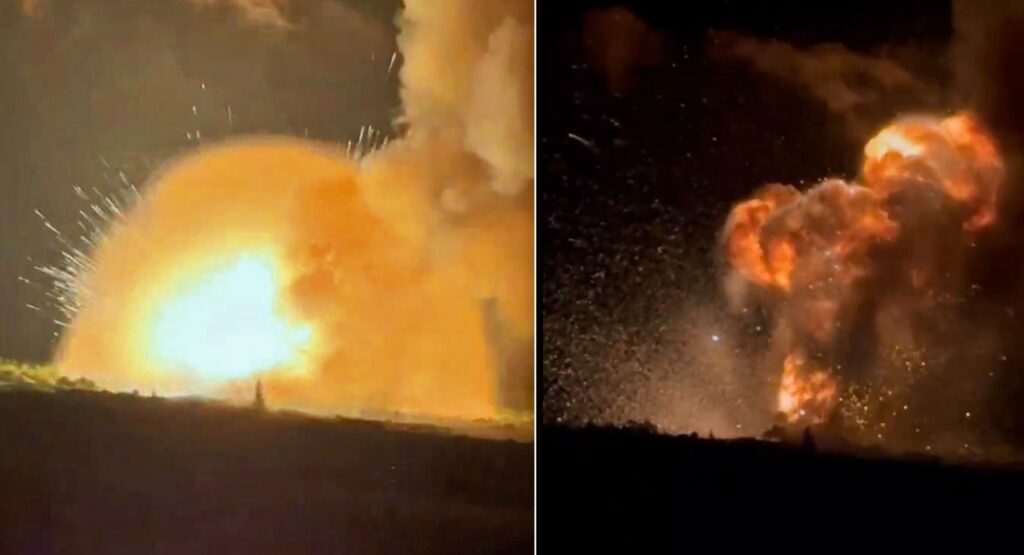

Powerful explosions and detonation erupted in the Russian-occupied city of Khartsyzk, Donetsk Oblast, late on 2 July. Multiple reports and videos from local sources point to a possible Ukrainian strike targeting an ammunition depot deep behind Russian lines.
Loud explosions occurred in Khartsyzk, accompanied by a strong detonation. Local residents shared videos showing the moment of impact and the subsequent fire. The footage, widely circulated on Telegram, depicted a large blast, followed by intense flames and a heavy smoke column.
The town has been under Russian control since 2014.
OSINT Telegram channel KiberBoroshno believes that the strike hit a former industrial storage facility. They stated,
“The area was marked as an ‘abandoned industrial warehouse for explosives,’ covered by a Tor air defense system, but it didn’t help.”
More footage of the last night's attack.
— Euromaidan Press (@EuromaidanPress) July 3, 2025
Occupied since 2014, Khartsyzk is a key logistics hub for Russian forces and has seen previous attacks in 2022 and January 2025.TG/Supernova+ pic.twitter.com/kGPWb726BY
Although the General Staff of the Armed Forces of Ukraine has not issued an official confirmation, the nature of the explosion strongly suggests a successful strike on a key Russian military site.
The head of Ukraine’s Center for Countering Disinformation, Andrii Kovalenko, also indicated that the location likely housed a Russian ammunition depot. The Ukrainian Telegram channel Exilenova+ echoed that claim, captioning the shared clips as “Strike on an ammo storage in Khartsyzk.”
More footage of the last night's attack.
— Euromaidan Press (@EuromaidanPress) July 3, 2025
Occupied since 2014, Khartsyzk is a key logistics hub for Russian forces and has seen previous attacks in 2022 and January 2025.TG/Supernova+ pic.twitter.com/kGPWb726BY
Victoria Zhukova, a representative of Russia’s occupation administration in the Khartsyzk district, acknowledged that many residents reported shattered windows in apartment buildings. She also noted complaints about heavy smoke in the aftermath of the explosion.
This incident is not the first strike on Russian targets in Khartsyzk. In January 2025, Ukrainian forces reported hitting a Russian army command post in the city. Earlier, in 2022, another ammunition warehouse in the occupied city exploded.


NATO Secretary General Mark Rutte said he understands the US administration’s desire to prioritize its own interests, but at the same time calls for continued military support for Ukraine.
The statement, delivered after the White House confirmed the suspension of systems approved under President Biden, a move that raises alarm as Ukraine fights against ever-increasing Russian missile and drone attacks.
Speaking on Fox News, Rutte said he “fully understands” the US desire to ensure American security interests are met first.
“But when it comes to Ukraine, in the short term, Ukraine cannot do without all the support it can get when it comes to ammunition and air defense systems,” Rutte said.
The NATO secretary general referenced discussions between Presidents Volodymyr Zelenskyy and Donald Trump during last week’s NATO summit, describing “a very good discussion, in particular focusing on air defense systems.”
The White House confirmed Wednesday that the Pentagon suspended deliveries of air defense missiles and precision-guided munitions to Ukraine due to concerns that US weapons stocks had been depleted.
“Yes, I understand that the US has to take care of its own weapons stockpiles. At the same time, we must allow for some flexibility,” Rutte said.
Ukrainian officials said they had not received official notification of the suspension or revision of delivery schedules for agreed defense assistance.
Rutte said European countries are increasing defense spending and aid to Ukraine, “but we cannot do without practical support from the US.”
“It is also in the interests of the US for Ukraine not to lose this war… And a secure Europe also means a secure US. This all is completely connected,” the NATO secretary general said.
Since February 2022, the US has provided $66.9 billion in military aid to Ukraine. The last package worth $500 million came in January.
By March, Ukraine had received 90% of weapons the previous administration allocated. Once Trump returned to power in 2025, the country has not announced any new military aid packages for Ukraine in nearly five months, signaling a possible cutoff. This comes amid Trump’s “America first” policy and his expectation that European allies increase their own defense support, including purchasing US-made weapons for Ukraine.
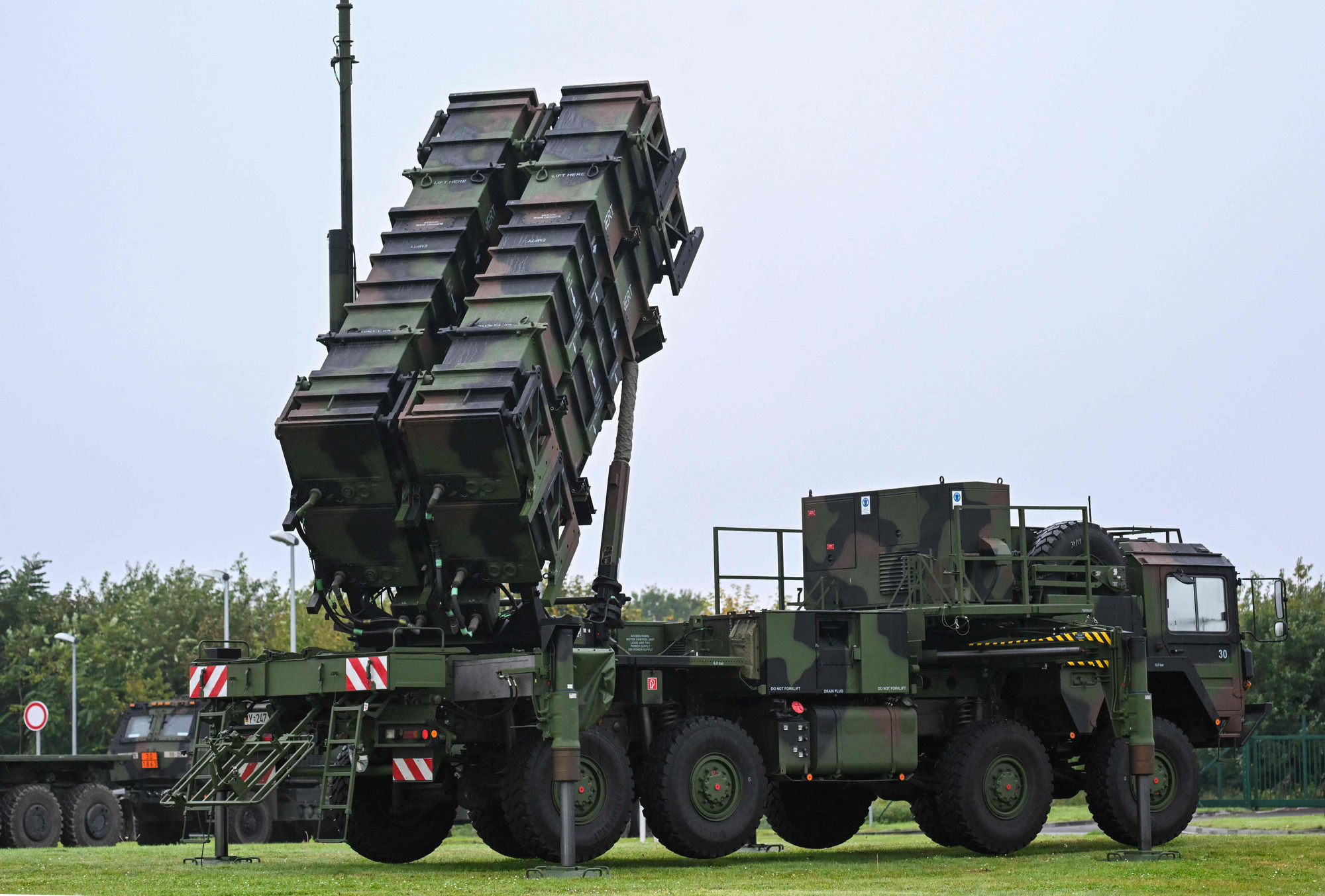


Ukraine’s long-range strike drone UJ-26 Bober (“Beaver”) has been upgraded with a manual operator control system similar to that of first-person-view (FPV) drones, along with thermal imaging and a high-quality data transmission channel—marking a major advancement in the country’s drone warfare capabilities.
Militarnyi reports that Ukraine’s Main Intelligence Directorate (HUR) has received a modified version of the Ukrainian-made UJ-26 drone developed by Ukrjet. This upgraded strike UAV features an FPV-style manual control system, allowing operators to guide it in real-time. The drone is now equipped with a thermal imaging camera and an unspecified communication system that ensures high-quality video transmission all the way to impact.
Read more on this particular attack in our previous report:
Ukrainian drones just lit up Russian-occupied Crimea, Donetsk, and Luhansk — here’s how (video)
The enhanced imagery from these drones was previously observed during missions conducted by the Prymary unit. At the time, Russian milbloggers claimed that fixed-wing drones used in those operations might have included built-in Starlink satellite communication terminals.
Despite the improved image quality from the thermal camera, Militarnyi notes that the drone’s control remains relatively sluggish. This could indicate a high signal transmission delay between the UAV and the operator’s console, lending credibility to the theory of a satellite communication link, possibly Starlink, being used.
The latest attack on the Saky airfield in occupied Crimea highlighted the drone’s operational capability. The required flight distance was under half the Bober’s maximum combat radius, suggesting it may have carried a heavier warhead. The standard payload is estimated to be just 20 kilograms, Militarnyi notes.
The launch footage released shows a Bober drone being catapulted rather than taking off from a runway. This launch method requires a large launching platform but eliminates the need for landing gear. As a result, it improves the drone’s aerodynamics and extends its range. However, this approach may limit the rapid deployment of multiple UAVs, since each unit needs time-consuming setup on its launcher. A possible solution could involve pre-positioning drones already airborne, though that strategy introduces its own challenges.
Militarnyi notes that the introduction of upgraded UJ-26 Bober drones—alongside the Russian modifications of the Iranian Shahed-236 UAVs—marks a new phase in the drone warfare.
“The ‘drone war,’ with the increase in production of heavy long-range drones, is shifting from the strategic to the tactical level—they are increasingly being used to strike individual combat units in the rear,” Militarnyi says.


On 1 July 2025, Ukrainian strike drones carried out a major long-range attack on Russian military infrastructure, striking the Kupol Electromechanical Plant in Izhevsk, about 1,400 kilometers from Ukraine. The facility is a major site for the production of Tor air defense systems and combat UAVs.
Multiple clips from Izhevsk, shared by local residents, confirm that Ukrainian Liutyi drones struck the Kupol Electromechanical Plant in the early morning of 1 July.
Eyewitness footage captured explosions and subsequent fires at the site. Ukrainian Telegram channels Exilenova+ and CyberBoroshno geolocated the strike site based on available videos. Their analysis confirmed that the main facility of Kupol had been hit.
Exilenova+ and Ukraine Context Telegram channels shared videos from Izhevsk showing a Liutyi flyover, strikes, and the aftermath, including fires at the facility.
Based on footage, Telegram channels Exilenova+ and CyberBoroshno confirmed that the Kupol plant was the target of the attack. pic.twitter.com/sC1xOAgUiw
— Euromaidan Press (@EuromaidanPress) July 1, 2025
Videos reveal that Russian personnel attempted to shoot down incoming UAVs using small arms fire.
This long-range attack inside Russia occurred simultaneously with Ukrainian strikes in occupied Luhansk, Donetsk, and Crimea:

According to the Russian news Telegram channel Astra, at least two drones attacked the Kupol factory five minutes apart. The videos showed a high chimney characteristic of the plant’s premises and a tall residential building at 7A 30 Let Pobedy Street, located one block away from the facility.
Telegram channel Ukraine Context shared footage showing a flyover of the Ukrainian Liutyi drones in Izhevsk, and the strikes on the military plant.
— Euromaidan Press (@EuromaidanPress) July 1, 2025
One of the clips features the sounds of secondary detonations before a larger explosion. pic.twitter.com/VnU7yk61UM
Founded in 1957, Kupol is one of Russia’s key defense enterprises. According to its director Fanil Ziyatdinov, as cited by Rossiyskaya Gazeta in 2023, the factory also produces Samam-M1 and Adjutant training complexes and services them. In July 2023, Reuters reported that Kupol began manufacturing Garpiya-A1 strike drones using Chinese-made components.
Due to its role in supporting Russia’s war effort, the European Union added Kupol to its sanctions list on 16 December 2022. The US, Canada, Ukraine, and Switzerland have imposed similar sanctions, citing its role in supplying weapons to the Russian military.
This was the second drone strike on Kupol since the beginning of Russia’s full-scale invasion. The first attack occurred in November 2024, as Euromaidan Press reported.
In the same early hours of 1 July, other parts of Russia came under drone attack. According to regional governors and Russian propagandist media, drones hit Rostov and Saratov oblasts.
Astra reported explosions in Saratov and Engels, and a temporary suspension of airport operations in Saratov.
Rosaviatsia spokesperson Artem Korenyako stated that airports in Ulyanovsk, Kazan, and Nizhnekamsk were also closed.
Acting governor of Rostov Oblast Yurii Sliusar claimed air defense downed drones over several areas, including Rostov-on-Don, Taganrog, Novoshakhtinsk, and multiple districts.
The Russian Ministry of Defense claimed air defenses had shot down 60 drones overnight. Reportedly, 17 were downed over Crimea, 16 over Rostov Oblast, 11 over the Azov Sea, 5 over Kursk Oblast, 4 over Saratov Oblast, and others over Voronezh and Oryol oblasts.
According to RIA Novosti, Astrakhan airport imposed temporary flight restrictions.
A Russian military airfield is located just two kilometers from Akhtubinsk. The site was last attacked in June 2024, when Ukrainian intelligence reported strikes on two Su-57 fighter jets — the first ever confirmed hit on these aircraft.
The missile alert was lifted at 00:18 local time, though authorities warned of a continued threat of “provocations by the enemy.”


Ukrainian forces launched massive strikes on Russian military infrastructure and logistical hubs in Russian-occupied Luhansk, Donetsk, and Crimea overnight on 30 June into 1 July, using drones and missiles to hit high-value targets.
Loud explosions rocked occupied Luhansk overnight on 1 July, triggering large fires reportedly caused by Ukrainian drone strikes. According to Russian occupation authorities and Russian propaganda media cited by Liga, around 20 drones were spotted over Luhansk, prompting the introduction of a “caution regime” in several cities in the region, including Khrustalnyi (formerly Krasnyi Luch), Lutuhyne, Dovzhanask (formerly Sverdlovsk), Sukodolsk, and Bilokurakyne.
Andrii Kovalenko, head of Ukraine’s Center for Countering Disinformation, stated that Ukrainian forces struck Russian logistics facilities in Luhansk.
Ukrainian Telegram channel Exilenova+ published video footage of the strike, showing night-time explosions and flames rising from what they identified as the city’s only major oil depot, located in its southern outskirts.
In one video, locals filming the strike mention that four drones directly hit the facility. Another video shared on the channel shows two distinct clusters of fires and the sound of a drone flyby, with sounds of small arms fire as the Russian forces attempted to shoot it down.
Earlier on the evening of 30 June, Ukrainian missiles hit a Russian military target in occupied Donetsk. Kovalenko referred to the strike as “jewelry work” and described the site as “very juicy.”
Ukrainian Telegram channel Supernova+ shared footage of the attack, with one of the clips showing two consecutive explosions, and others a large fire. The channel claimed that Ukraine used Storm Shadow/SCALP-EG cruise missiles to strike the headquarters of Russia’s 8th Combined Arms Army, located at the Donetsk Institute of Non-Ferrous Metals (DonIsSM). The Dnipro-based outlet Harbuz also attributed the attack to Storm Shadow missiles.
Some Ukrainian sources, including the Telegram page Kiberboroshno, alleged that the facility was involved in Russian drone and electronic warfare systems development. Russian channels attempted to downplay the strike by claiming no military personnel had been stationed in the building recently.
One video captured the immediate aftermath, showing several floors collapsed down to the basement. On-site rescuers speaking to people filming — presumed to be from Russia’s FSB security agency — described the scene using Russian military casualty codes — “300” for wounded and “200” for dead — confirming the presence of both.
Supernova+ commented that “the building was hit down to the basement… they’re carrying out ‘200s’ in packs.”
Meanwhile, local propaganda outlets confirmed the city had been targeted by Storm Shadow missiles and reported additional fires at the Sokol market. Unconfirmed reports suggested hits also occurred at a metallurgical plant and in the railway zone.
One of the Supernova-shared videos shows multiple strikes in Yasynuvata, Donetsk’s northern suburb, hosting a railway hub and multiple industrial facilities.
Ukraine’s Main Directorate of Intelligence (HUR) released exclusive footage showing its UJ-26 Bober drones targeting Russian military systems in occupied Crimea. The video captures strikes on several key air defense assets, including the Pantsir-S1 SAM system, Niobiy-SV radar, Pechora-3 coastal radar, and Protivnik-GE radar. A Russian Su-30 fighter jet was also damaged or destroyed on the runway at the Saky airbase.
HUR commented:
“Reliable weapons in the hands of Ukrainian special forces are turning the enemy’s critical military assets into worthless junk.”
The attacks reflect a broader Ukrainian strategy of targeting critical Russian military and logistical infrastructure in occupied territories amid the ongoing Russian invasion of Ukraine.


Over 9,300 Russians were knocked out of combat in a single month. Ukraine’s General Staff reports that this number of soldiers Russia lost on the Slobozhanskyi and Kursk axes in June 2025 alone.
Of these, over 4,470 are irreversible losses. Another 4,800 were wounded, and 42 Russian troops were captured.
Ukrainian forces also destroyed 423 units of Russian equipment, including six tanks, 20 armored vehicles, 89 artillery systems and MLRS, as well as three air defense systems.
The General Staff notes that Ukrainian units conducted deep strikes up to 100 kilometers behind enemy lines, including on Russian territory. These strikes hit 16 command posts, six manpower concentration areas, three ammunition depots, and even a logistics hub and an oil depot.
Since the start of the Kursk operation in August 2024, Russia has lost over 75,860 troops in this sector, with 1,037 captured. Additionally, Ukrainian forces have destroyed 2,848 pieces of equipment, including 99 tanks, 709 armored vehicles, and 322 artillery systems and MLRS.


Norway will send F-35 fighters to Poland to protect NATO’s strategic logistics hub in Rzeszów from potential sabotage and missile strikes. The Norwegian Ministry of Defense has announced that the jets will be deployed over this important center for international military aid to Ukraine as early as this fall.
Earlier, the US announced plans to redeploy some of its military equipment and personnel from the Polish military airport Jasionka, near Rzeszów, to other locations within Poland. US aircraft and troops began arriving in Jasionka shortly before Russia’s all-out war against Ukraine in February 2022.
Norwegian Defense Minister Tore Sandvik has emphasized the importance of this assistance to the defense of Ukraine.
“This is an extremely important contribution. We are helping ensure that aid reaches Ukraine and that the country can continue the fight for freedom,” he states.
In June 2025, it became known that Rzeszów is also a center of Russian spy activity. Vasyl Malyuk, head of Ukraine’s Security Service, confirmed that several assassination attempts on President Volodymyr Zelenskyy were foiled in this city, UNIAN reports.
They were organized by a retired Polish military man who had been recruited decades ago and firmly believed in the Soviet idea. The goal was the physical elimination of Zelenskyy at Rzeszów airport. Several options were considered: an FPV drone or a sniper system.
Vasyl Malyuk said that these plans were prevented due to cooperation with Poland’s special service, the Internal Security Agency (ABW), the counterpart of Ukraine’s SBU.
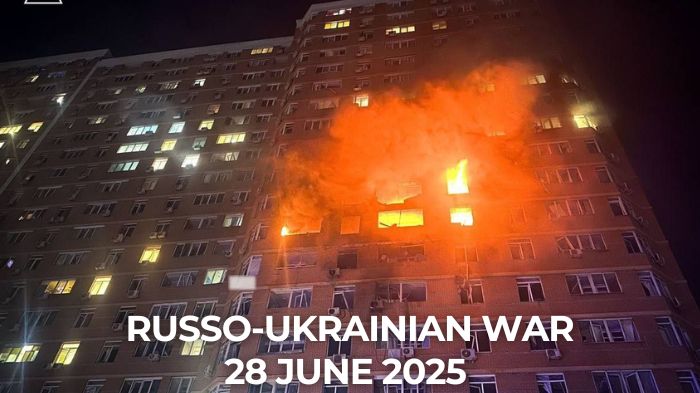

Why Ukraine must bet it all on Putin’s greatest weakness—Crimea. Ukraine must focus its strategic efforts on reclaiming Crimea to exploit Putin’s most vulnerable position.
Ukraine strikes Crimea again, destroys Russia’s Pantsir air defense system and helicopters
On the night of June 27–28, Ukraine’s Security Service (SBU) carried out a drone strike on the Kirovske military airfield in Russian-occupied Crimea.
Ukraine intercepts a mystery Russian bomb near Dnipro — officials debate if it’s Grom-1
At approximately 11:30 AM local time, a loud explosion shook the suburbs of Dnipro, a major city in central Ukraine.
Ukraine intelligence: Russia deploys Soviet-era tanks as modern reserves dwindle amid massive losses
Russia began deploying Soviet-era T-62 tanks from the 1960s, as the country faces mounting equipment losses in its war against Ukraine, according to Ukraine’s Main Intelligence Directorate.
Zelenskyy: Russian missiles and drones still packed with Western tech — and still killing Ukrainians
Ukrainian President Volodymyr Zelenskyy has warned that Russia continues to rely on foreign-made components, including from Western countries, to build weapons used in its war against Ukraine.
Bild: Germany’s Ukraine aid promise math doesn’t add up as € 900 million missing from actual budget
A nearly one billion euro gap has emerged between German Defense Minister Boris Pistorius’s public promises of Ukraine military aid and the actual budget allocations approved by Chancellor Friedrich Merz’s cabinet, according to Bild.
NATO allies conduct major river crossing joint exercise in Germany as Russian security threat persists
Military units from Germany, Britain, the Netherlands, and Italy successfully completed a large-scale river crossing operation on 28 June as part of ongoing joint military exercises in Germany.
German chancellor rules out direct contact with Putin as previous calls led to more strikes on civilians
German Chancellor Friedrich Merz ruled out telephoning Russian President Vladimir Putin in the foreseeable future, citing a pattern of escalated attacks following diplomatic outreach attempts, according to an interview with Süddeutsche Zeitung.
Russian drone strike on Odesa kills teacher and husband, injures children — “We heard it coming, helpless” (updated) Two people were killed in a Russian drone attack on a residential high-rise in Odesa, local authorities confirmed.
Pope expresses sorrow for Ukrainian prisoners and victims of war. Zelenskyy asks for help to return prisoners Pope Leo XIV expressed solidarity with Ukrainian families suffering from the Russian aggression during a Vatican service, prompting President Volodymyr Zelenskyy to request papal help in bringing home Ukrainian prisoners of war and deported children.
Read our earlier daily review here.
You could close this page. Or you could join our community and help us produce more materials like this.
We keep our reporting open and accessible to everyone because we believe in the power of free information. This is why our small, cost-effective team depends on the support of readers like you to bring deliver timely news, quality analysis, and on-the-ground reports about Russia's war against Ukraine and Ukraine's struggle to build a democratic society.
Become a patron or see other ways to support.
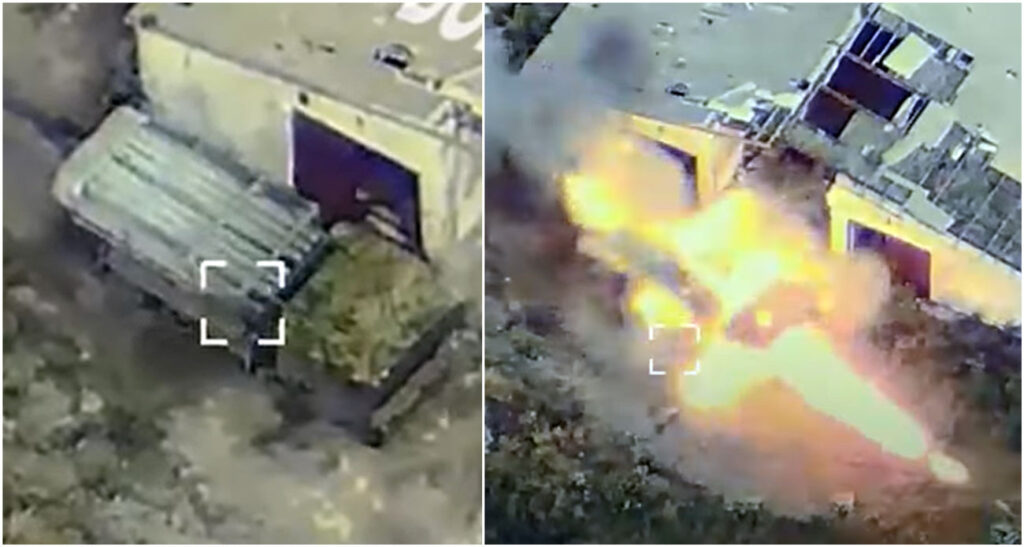

Ukrainian forces have destroyed a rare M-1991 multiple launch rocket system (MLRS) originating from North Korea, marking the first confirmed elimination of this type of weapon in the ongoing Russo-Ukrainian war. The drone strike was carried out by soldiers of the Raid battalion, which shared footage of the operation. The attack reportedly occurred in the Novopavlivka sector in eastern Ukraine’s Donetsk Oblast.
Militarnyi notes that video footage published by the Raid battalion on Telegram shows FPV drone footage, targeting the MLRS. The strike hit one of the rockets inside the launcher pack, causing an unplanned launch that pierced the crew cabin. The impact also sparked a fire, which eventually destroyed the system.
The M-1991 MLRS was introduced by North Korea’s military in the late 1980s. It features a 240 mm caliber and was designed as an attempt to replicate the Soviet “Uragan” system. The launcher carries 22 rockets and is mounted on a Chinese CQ25290 truck chassis. It requires a two-person crew along with a driver and commander.
Each rocket used by the M-1991 measures approximately 5.2 meters in length. While the original maximum range was around 60 kilometers, North Korean sources claimed in 2024 that it had been extended to 80 kilometers.


Ukrainian military intelligence reported that its drones successfully hit five valuable components of Russia’s S-400 Triumf air defense system during a covert operation in occupied Crimea. The attack was carried out by the elite Prymary (“Ghosts”) unit of the Main Intelligence Directorate (HUR) and targeted critical radar systems and a missile launcher. The agency did not share the details of the operation, but the short range of FPV drones suggests that those may have been launched from a maritime carrier drone, like in previous similar operations.
On 26 June, Ukraine’s HUR announced that its special unit Prymary executed a drone attack that damaged or destroyed key components of the Russian S-400 system in Crimea. HUR stated:
“Prymary returns: HUR warriors strike enemy air defense systems in Crimea.”
The operation focused on high-value and technically advanced elements of the S-400. The components targeted included two 92N2E multifunction radar stations and two 91N6E detection radars, along with one S-400 missile launcher.
According to HUR, this targeted strike further weakens Russia’s ability to control the skies over the occupied peninsula.
Video footage released by HUR showed the FPV drone strikes hitting their intended targets.
As reported by Militarnyi, the 92N6E radar units are responsible for target detection, tracking, and missile guidance, capable of tracking up to 100 targets and guiding as many as 72 missiles simultaneously. The 91N6E radars, also struck during the operation, are used for long-range detection and target assignment within the missile complex.
The S-400 missile launcher reportedly hit in the attack was believed to be armed with missiles at the time.
Originally introduced as a successor to the Soviet-era S-300 system, Russia promoted the S-400 Triumf as one of the most powerful air defense systems in the world. Russia has actively exported the system and spread propaganda emphasizing its effectiveness.
However, the full-scale Russian invasion of Ukraine, which began in February 2022, has repeatedly challenged those claims. Ukrainian drone operations in Russian-occupied Crimea have exposed vulnerabilities in the S-400 system.
According to open-source intelligence group Oryx, Ukrainian forces have visually confirmed the destruction of at least 18 S-400 launchers, 3 radars, and 3 tractor vehicles used in the complex since the all-out war began.


US President Donald Trump has publicly criticized former Russian President Dmitry Medvedev over his hints about the possibility of other countries transferring nuclear weapons to Iran, reminding him of the risk of such words.
Dmitry Medvedev is often called the “mouthpiece of the Kremlin” because of his apocalyptic social media statements, which reflect Moscow’s official position. He has frequently issued nuclear threats in social media messages aimed at the West.
After the US president carried out strikes on Iran’s nuclear infrastructure, Medvedev stated that Tehran would restore its nuclear program and that several countries might transfer warheads to it.
In response, Trump dismissed his claims.
“Did I hear Former President Medvedev, from Russia, casually throwing around the ‘N word’ (Nuclear!), and saying that he and other Countries would supply Nuclear Warheads to Iran? The ‘N word’ should not be treated so casually. I guess that’s why Putin’s ‘THE BOSS, ’” he wrote.
The reaction came on the TruthSocial platform after Medvedev published a post criticizing US actions in Iran, calling the strikes futile and accusing the US of igniting a new war.
Later, Medvedev clarified that Russia would not transfer nuclear weapons to Iran, although, in his opinion, other countries might do so.
Moscow is reportedly adopting a cautious stance toward the US to avoid further economic damage and the reinforcement of Western support to Ukraine.
Meanwhile, US Vice President JD Vance said the strikes significantly set back Iran’s nuclear program.
On 23 June, Iranian Foreign Minister Abbas Araghchi visited Moscow to meet with Russian President Vladimir Putin and other senior officials after the US strikes. While Russia offered diplomatic support and expressed willingness to mediate the crisis, it did not promise concrete military assistance to Iran.
Russia, heavily engaged in its own war with Ukraine and facing economic sanctions, appears reluctant or unable to provide substantial military aid to Tehran at this time.
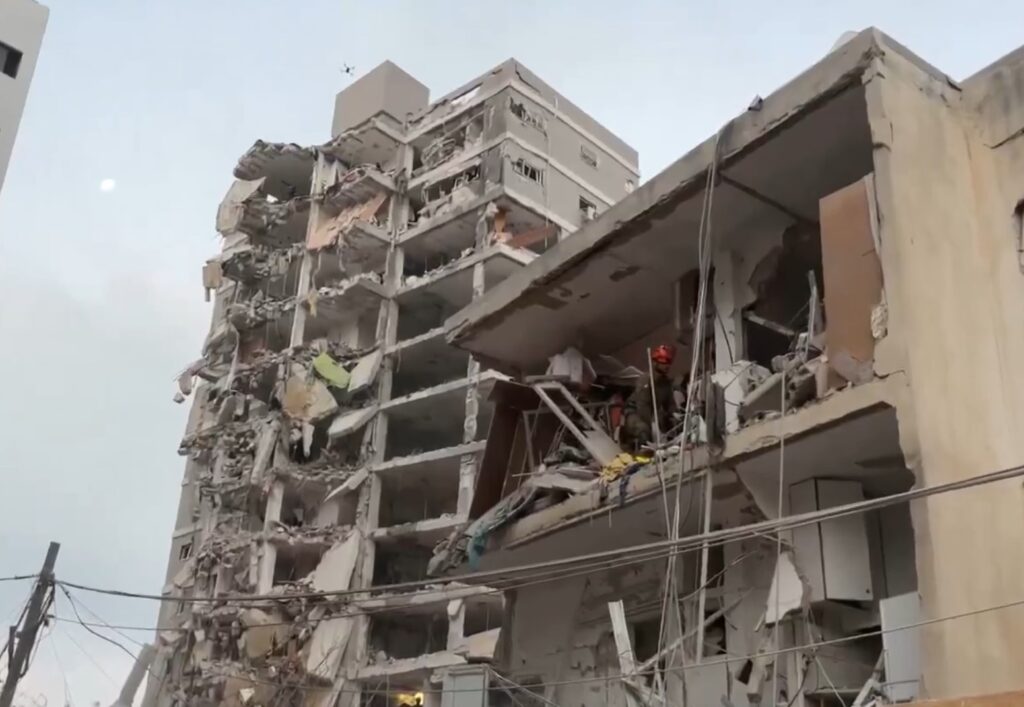

Iran has once again launched missile attacks on Israel, striking the city of Beersheba. One of the missiles hit a residential building, killing at least three people, CNN reports.
On 13 June, Israel carried out a large-scale military Rising Lion operation targeting Iran’s nuclear facilities. The operation, years in the making, mirrored Ukraine’s Operation Spiderweb, as both involved coordinated drone swarms launched from hidden bases to cripple enemy infrastructure.
This came just hours after US President Donald Trump stated that Iran and Israel had allegedly agreed to a ceasefire. According to him, the truce was set to begin on the morning of 24 June, with Iran initiating a halt in hostilities, followed by Israel 12 hours later. The ceasefire, however, did not happen.
Iran uses terror against civilians as a weapon of war, a tactic it shares with its ally, Russia.
On the same day, 23 June, Iranian Foreign Minister Abbas Araghchi arrived in Moscow to seek additional support from Russian President Vladimir Putin following recent US strikes on Iran’s nuclear facilities, according to Reuters.
Later, Araghchi claimed that Iran was ready to halt military actions against Israel, while simultaneously blaming Israel for the war.
Meanwhile, in Ukraine, Russia continues its aggression under the guise of peace efforts, launching strikes on homes, hospitals, and schools while claiming to support negotiations. Trump has repeatedly said that Moscow seeks peace, but since the start of such statements, Russia has increased its attacks on different fronts, as well as assaults on civilians.
Previously, US Vice President J.D. Vance declared that following American airstrikes on Iranian nuclear facilities, Tehran is no longer capable of building a nuclear weapon, per The Guardian. However, he declined to comment on the status or location of Iran’s highly enriched uranium, saying only that he believes it was buried.
On 23 June, after a Russian strike on Kyiv, which killed nine civilians, including an 11-year-old girl, Ukrainian President Volodymyr Zelenskyy said that Russian assaults have become possible due to “a coalition of killers”, meaning Russia, Iran, and North Korea.
Putin mourned Nazi victims—then ordered missile strike on Kyiv, which kill 11-year-old girl and her mother
“Everyone in countries bordering Russia, Iran, and North Korea should ask themselves whether they could protect lives if this coalition of killers survives and continues spreading terror,” he emphasized.


The EU intends to impose the harshest sanctions yet in response to Russia’s terror against civilians in Ukraine. French Foreign Minister Jean-Noël Barrot announced such plans ahead of a Council of EU Ministers meeting in Brussels, UkrInform reports.
On 22 June, Russian President Vladimir Putin honored the memory of those who died in battles with Nazi regime and few hours later launched a massive strike on Kyiv. According to the latest data, at least nine people were killed, including an 11-year-old girl. The body of her mother had been found earlier. Since US President Donald Trump’s peace efforts, Moscow has drastically increased its attacks on civilians.
Barrot condemned Moscow’s “limitless brutality”, pointing to the Kremlin’s deliberate missile and drone strikes on civilian infrastructure during recent nighttime attacks.
He emphasized that Russia’s war resembles an imperialist colonial campaign, and said that the Russian economy’s resources are increasingly being drained by it.
Russia’s economic resources will be depleted even further due to the sanctions package under discussion today, likely the most powerful since 2022, Barrot stated.
Putin mourned Nazi victims—then ordered missile strike on Kyiv, which kill 11-year-old girl and her mother
According to the French minister, the goal is to significantly escalate pressure on Russian ruler Vladimir Putin, pushing him toward a ceasefire and negotiations that could lead to a just and lasting peace in Ukraine.
The upcoming EU measures are expected to target Russia’s financial sector, trade, energy industry, and access to dual-use technologies, which Moscow continues to seek through third countries.
Earlier, Ukrainian President Volodymyr Zelenskyy stated that Russian strikes became possible due to “a coalition of killers”, meaning Russia, Iran, and North Korea.
He said that every nation bordering them should ask themselves whether they could protect lives if it continues spreading terror.
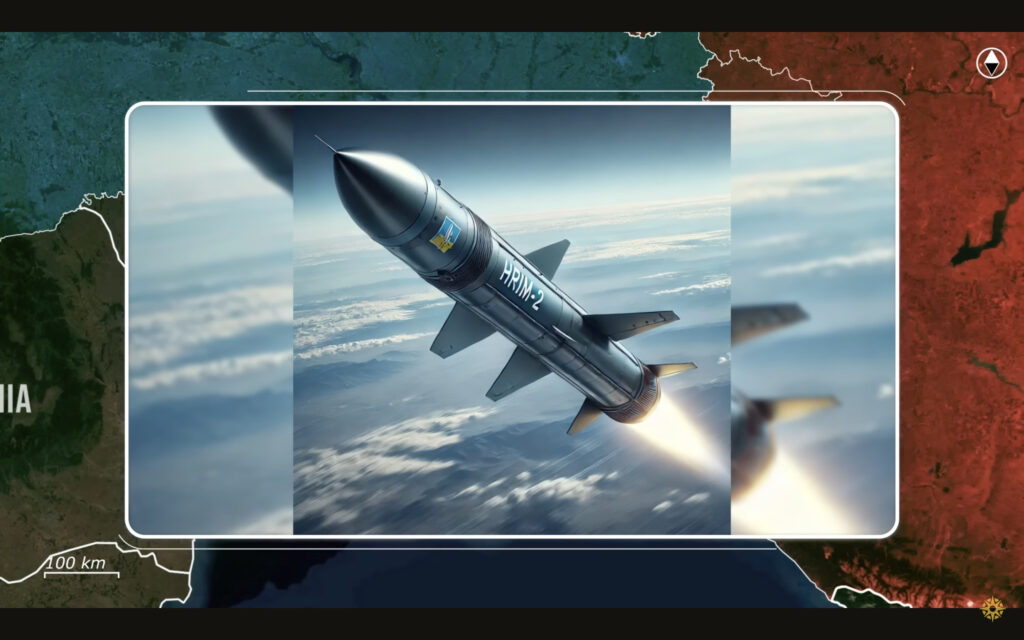

Today, there are a lot of important updates from Ukraine.
Here, as Ukraine ramps up its long-range strike capabilities, a breakthrough is taking shape, with German funding powering Ukraine’s first hypersonic missile launch. Backed by a five-billion-euro defense package, Ukraine’s Hrim-2 [thunder in Ukrainian] hypersonic missile is now entering serial production, marking a bold new chapter in Ukraine’s ability to hit deep behind Russian lines.
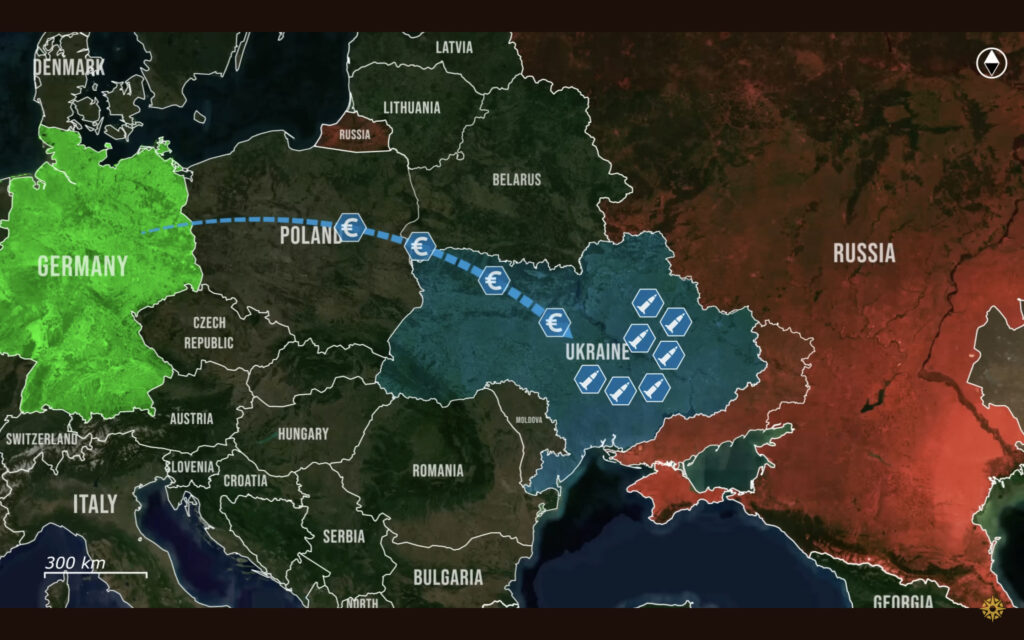
Ukraine has officially announced the development of its own domestically produced ballistic missile, the HRIM-2. After over a decade of delayed progress due to funding issues, the missile system is now entering serial production, accelerated by international military and financial support since the start of the full-scale war.
Notably, Germany has provided a new five-billion-euro defense package, which includes significant investments in the domestic production of Ukrainian long-range weapon systems, including the development and production of the new ballistic missile. This aid enabled the Ukrainians not only to develop the missile but also to initiate serial production of the Hrim-2 immediately after its development.
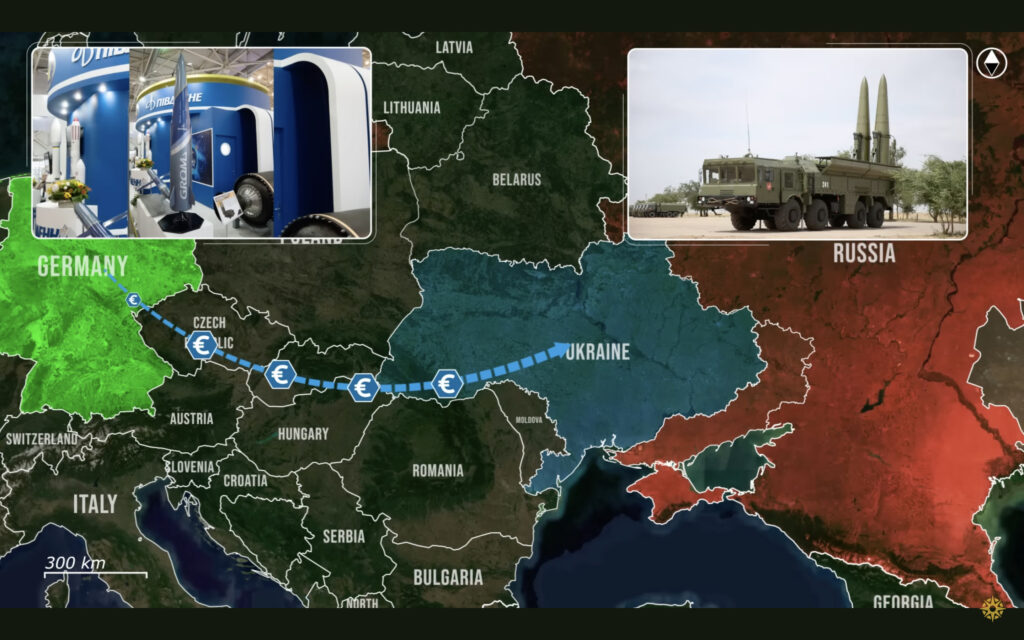
Notably, the Ukrainian Ministry of Defense also announced that they had already conducted a successful field test of the missile. Ukrainians shared footage of this strike, adding that it was used to destroy a Russian command post on the east bank of the Dnipro River delta. This means that the Hrim-2 system is combat-tested and fully operational, opening the possibility of an increased number of similar precision strikes against Russian military targets deep behind the frontline.
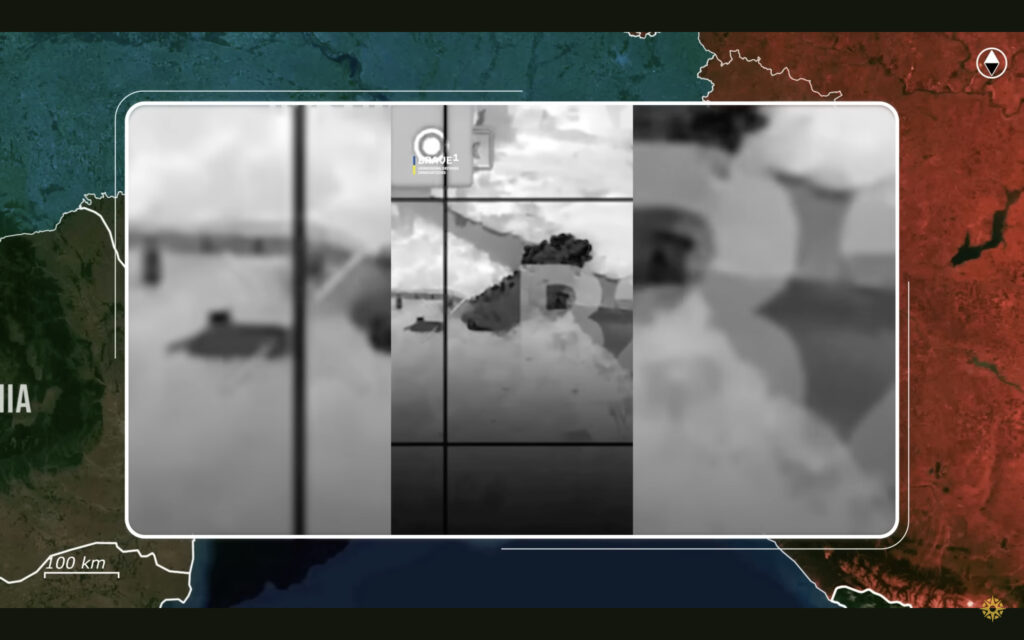
The Hrim-2 is launched from a specialized ground vehicle that fires it into the air using a solid propellant rocket engine, before following a set ballistic trajectory towards a stationary target. The Hrim-2 has an operational range of 300 kilometers and can reach speeds of up to Mach 5.2, or nearly 1.8 kilometers per second, making it a hypersonic missile.
The 400-kilogram warhead allows for the destruction of hardened bunkers, logistics hubs, airbases, and ammunition depots, especially because these are stationary targets that are easy to trace. The capability of Hrim-2 to carry a heavy warhead for strikes within a 300-kilometer range marks a major leap forward for the Ukrainian precision strike capabilities, as the warhead is twice as big as that of Atacms, which Ukrainians were previously dependent on for similar precision strikes.
Interestingly, these capabilities bring it comparably close to the Russian Iskander ballistic missiles, which have a similar payload of around 400 kilograms, while the Ukrainian Hrim-2 might soon catch up with or even exceed the Russians’ range of 400 kilometers as development continues.
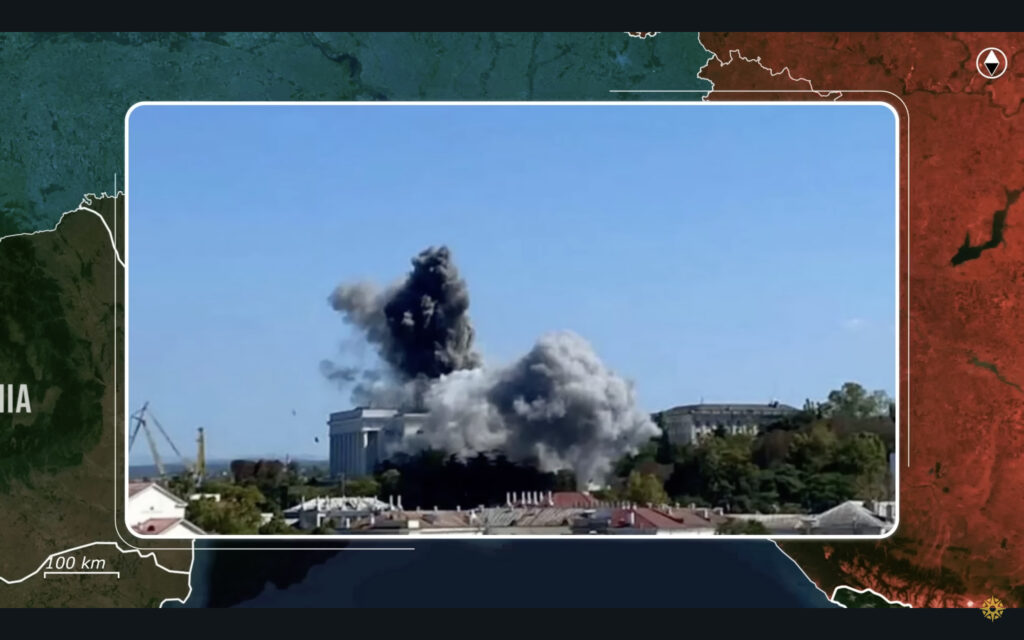
The fact that it is launched from a mobile transport vehicle gives Ukrainians the ability to quickly move to a firing position, fire the missile hundreds of kilometers away from the frontline, and pull back before the Russians can strike back. Its immense speed of 1.8 kilometers per second is nearly twice as fast as the Atacms, and allows it to strike at its maximum range in under 3 minutes.
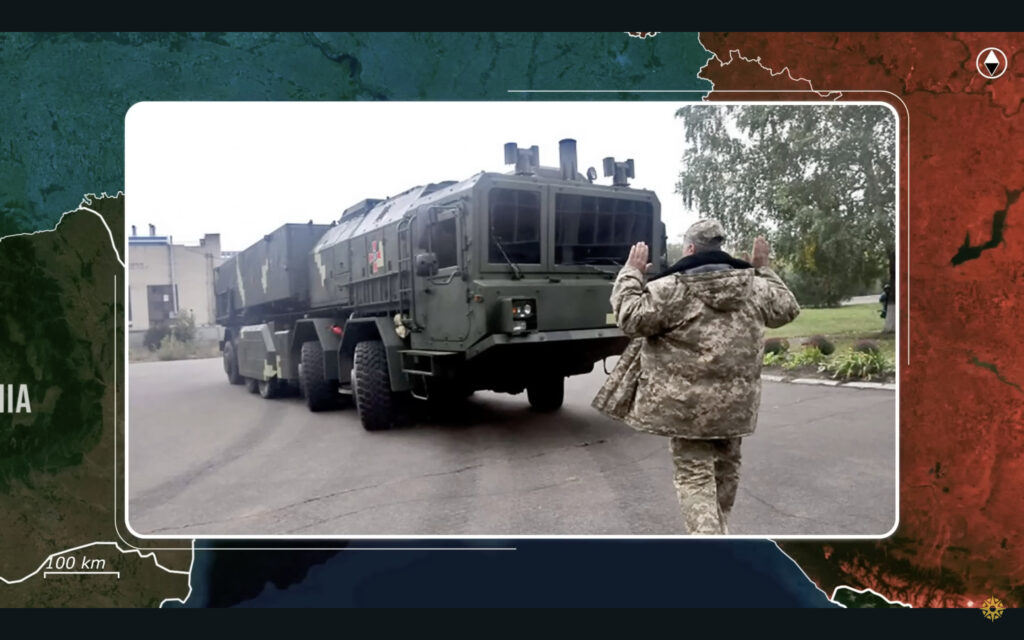
Furthermore, while Russian air defenses like the S-300 and S-400 are able to intercept targets at this speed on paper, as a missile enters the hypersonic range, a successful interception becomes increasingly unlikely.
The fact that the Hrim-2 ballistic missile is a completely domestic product of the Ukrainian military industry, without a reliance on foreign components, makes it possible to quickly produce and fire in large numbers, costing 3 million US dollars, or 2.6 million euros, a piece.
The 5 billion euro defense package also secured this funding for Ukraine’s long-range strike drones, FPV drones, and drone interceptors. Notably this will also allow Ukraine to massively increase the production of the Liyuti long-range strike drones with a range of 2 thousand kilometers, Bars missile-drones with a range of 800 kilometers, and Flamingo high-speed drone-interceptors, which are an extremely cost-effective way to intercept the hundreds of Shaheds that Russia launches toward Ukraine each day.
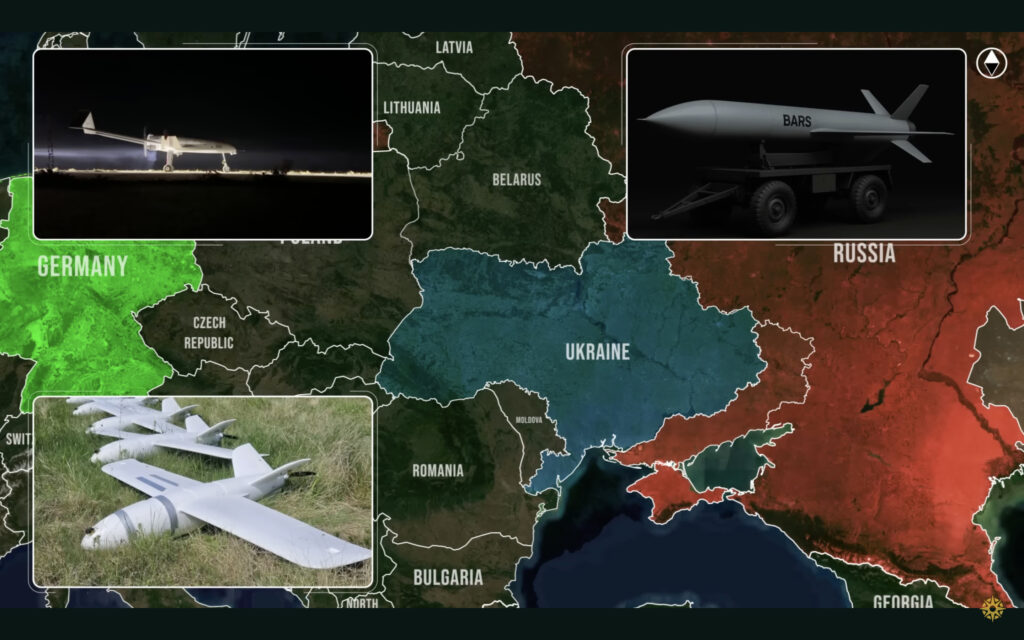
Overall, the Ukrainians are rapidly developing their precision deep-strike capabilities, enabled by massive German funding. Additional funding into the Ukrainian military industry will likely continue, as Germany and the rest of NATO witness the potential and effectiveness of Ukrainian long-range precision strikes. All the while, Ukraine has a massive new weapon ready, with the first missiles already rolling of the production line.
In our regular frontline report, we pair up with the military blogger Reporting from Ukraine to keep you informed about what is happening on the battlefield in the Russo-Ukrainian war.
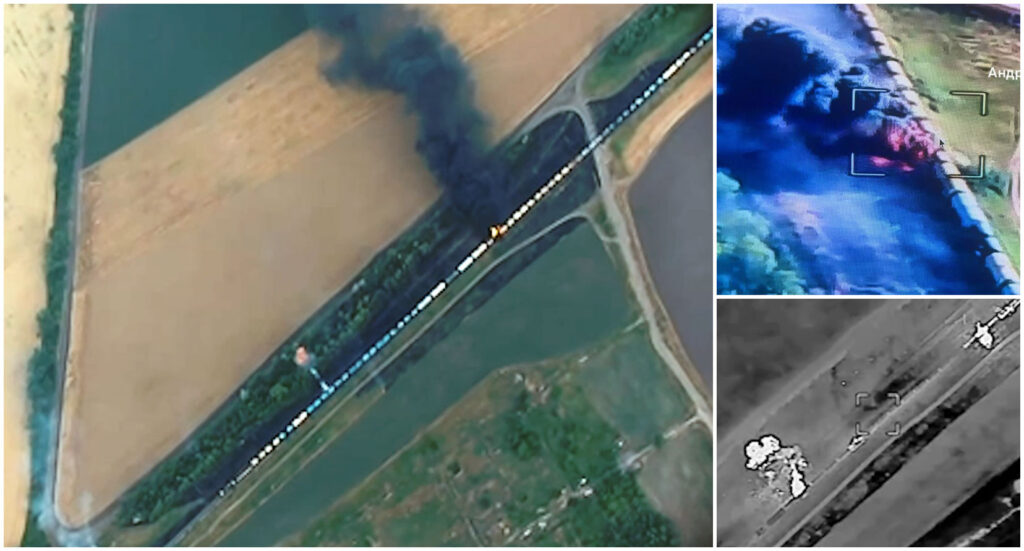

A Ukrainian drone strike led by military intelligence has destroyed a Russian train carrying fuel in Russian-occupied Zaporizhzhia Oblast. The attack, confirmed on 22 June by Ukraine’s Main Intelligence Directorate (HUR), marks the second such strike in less than a month on a key railway corridor supplying Russian forces in southern Ukraine.
On 21 June, Petro Andriushchenko’s Telegram channel reported a Ukrainian attack on a Russian fuel train in the occupied part of Zaporizhzhia Oblast, and later published a photo showing the aftermath of the attack near the railway stretch between Levadne and Molochansk in Tokmak district, about 35 km behind the lines.
“Right now (16:43, – Ed.), Defense Forces have struck and are finishing off a Russian train with tankers,” he wrote, noting that several fuel tankers caught fire.
Andriushchenko later reported that by 21:16, 11 tankers were ablaze and smoke was visible from up to 20 km away. According to him, “the rail track is destroyed — will take weeks to fix — meaning no fuel to the front lines for two weeks.”
Andriushchenko claimed on 22 June that the fire covered 18–20 tankers and was not extinguished by Russian forces as of 13:11. He wrote that Russia attempted to salvage some of the cargo by sending a locomotive to retrieve 15–20 tankers, pulling them toward Melitopol, but others were left to burn.
He added that Ukrainian drone operators struck the convoy “like a bowling alley,” destroying car after car during the night.
Ukrainian drones destroy Russian fuel train near occupied Molochansk over 35 km behind the lines
— Euromaidan Press (@EuromaidanPress) June 22, 2025
The previous Russian fuel train was struck a month ago in the same area.
Read more: https://t.co/YMNXm2zCYJTG/HUR, Andriushchenko Time pic.twitter.com/o9JcDv0Rj3
On 22 June, HUR officially confirmed the attack. The agency reported that its Kabul 9 unit carried out the strike in cooperation with Southern Ukraine Defense Forces, Alfa unit, and the Next group of the State Special Communications Service.
“The black smoke soared to the skies,” HUR wrote, noting that the burning tankers contained diesel and other fuel materials meant for Russian troops.
HUR’s video shows at least three points of conflagration and a large patch of scorched vegetation beside the train, but the distance and low clarity make it difficult to determine which and how many tank cars were damaged.
This is not the first Ukrainian strike on Russian military trains in the area. On 24 May, HUR’s strike drone pilots hit another Russian fuel train on the railway line between Verkhniy Tokmak, Molochansk, and Fedorivka.
Ukrainian drones hit Russian military train with fuel in occupied Zaporizhzhia Oblast (video)
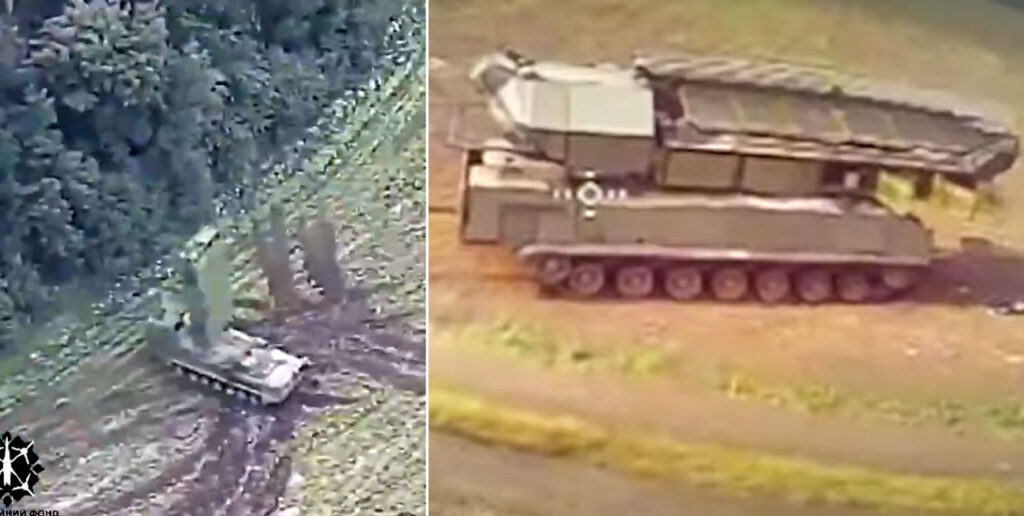

Ukrainian defense forces have destroyed two high-value Russian radar systems — the Buk-M3 system’s anti-air radar and a Zoopark counterbattery radar — in targeted FPV drone strikes, according to official reports and video footage, Militarnyi reports.
The 14th Separate UAV Regiment of Ukraine’s Drone Forces reported that it struck a radar system belonging to a Russian Buk-M3 air defense system. The radar, identified as the 9S36M Viking, was hit with two FPV drones.
The attack reportedly rendered the radar nonfunctional and immobile. Following the strike, footage was released by Ukrainian military units confirming the precision hit on the Russian radar equipment.
In a separate operation, the Ukrainian unit UA_REG TEAM reported hitting a Russian Zoopark-1 counterbattery radar, also with an FPV drone. The strike took place during the deployment of the radar, with the drone impacting directly into the antenna array of the 1L219 Zoopark system.
The published video shows the moment of impact. According to the unit, the hit caused such extensive damage that a full replacement of the radar components would be required for any potential restoration.
— NOELREPORTS
UA_REG TEAM of the 8th Separate Special Purpose Regiment confirms, among hitting other heavy equipment and personnel, the destruction of a Russian 1L219 "Zoopark" counter-battery radar. pic.twitter.com/noE61ZfRVr

(@NOELreports) June 22, 2025
Citing the OSINT project Oryx, tracking visually confirmed equipment losses, current Russian losses include 24 radar reconnaissance stations of the 1L219/1L261 Zoopark/M types. Additionally, 11 units of the low-altitude radar detection systems 9S36M “Viking” have now been lost, with six belonging to Buk-M2 systems and five to Buk-M3 systems.


A Ukrainian family who fled to Israel seeking life-saving treatment for a child with cancer were killed when an Iranian missile struck their apartment in Bat Yam, a city near Tel-Aviv, on 13 June. The victims included 7-year-old Nastia Buryk, her mother, grandmother, and two cousins.
Nastia Buryk, originally from Odesa, was diagnosed with acute lymphoblastic leukemia in August 2022, shortly after Russia launched its full-scale invasion of Ukraine. Her mother, Maria Pashkurova, had shared the heartbreaking news publicly:
“Since that day, I have been living in a parallel reality, where the main thing is to save. To breathe. To not give up.”
Nastia initially received chemotherapy in Ukraine, but after a relapse, her family sought more advanced care. They relocated to Israel in December 2022 with the help of donations, hoping to access treatment unavailable during wartime in Ukraine. Nastia underwent a bone marrow transplant in Israel, but the procedure failed. Facing mounting medical bills, her father Artem—who joined Ukraine’s 95th Airborne Assault Brigade—continued raising funds from the frontline.
By spring 2025, Maria pursued an experimental treatment in Israel to reactivate the failed transplant. Her mother Olena and two nephews—9-year-old Kostiantyn and 13-year-old Illia—joined her in Israel, where the boys enrolled in school.
Rescuers among the injured as Russia again targets civilians in Odesa and Kharkiv
On 13 June, just a day after Israel launched Operation Rising Lion, targeting Iran’s nuclear and missile infrastructure, Iran began daily retaliatory strikes. One of its missiles struck the family’s apartment in Bat Yam on the first night of the Iranian assault. According to Ynet News, all five members of the Ukrainian family were killed.
In addition to the Ukrainian family, four other people reportedly died in the Bat Yam missile strike, and more than 100 people were injured in the blast.
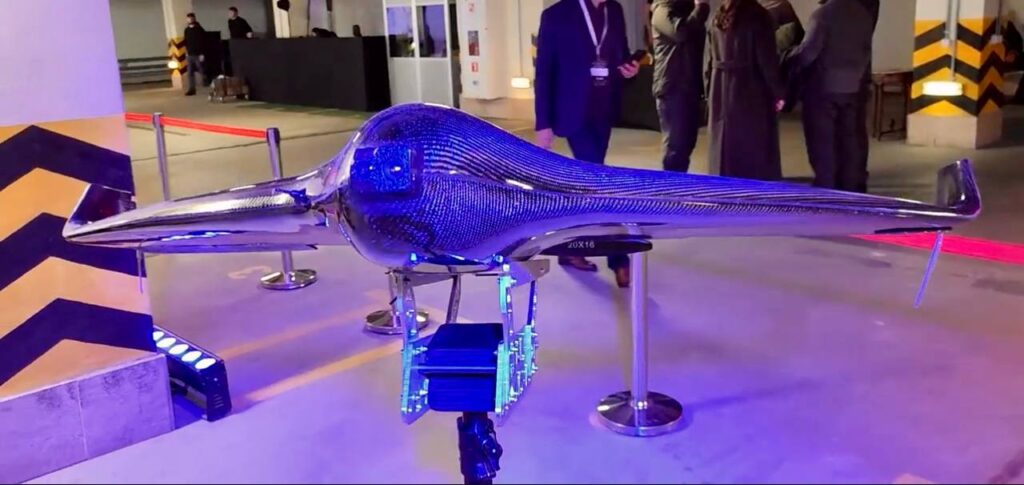

The Ukrainians are watching US President Donald Trump’s ultimatums to Iran with frustration as the US refuses to apply the same pressure to Russia.
While both regimes are using terrorist attacks as a weapon in war, the US is withholding new aid packages, avoiding fresh sanctions, effectively pressuring Kyiv toward capitulation. Meanwhile, Russia has intensified its strikes after the start of Trump’s peace efforts, at times launching four times as many drones on Ukrainian cities as Iran.
This disappointment peaked when the G7 declined to issue a joint statement condemning the war, reportedly over US concerns it might complicate negotiations with Russian ruler Vladimir Putin.
A planned meeting between Ukrainian President Volodymyr Zelenskyy and Trump at the summit was also canceled after Trump abruptly left the summit a day early. Ukraine intended to use the meeting to discuss the purchase of American weapons, including crucial air defenses.
At a moment of diplomatic failure in the West, Russia has seized the opportunity to fully display its destructive power, Texty reports.
In a recent attack, Moscow launched nearly every non-nuclear weapon in its arsenal against Kyiv and other cities, killing 28 civilians just in the capital in what became the most extensive strike by volume of targets since 2022.
Altogether, Russia deployed:
“Russia struck Ukraine deliberately to demonstrate that G7 leaders are weak,” Ukraine’s Foreign Ministry said in a statement.
Indeed, the G7 failed to release a joint statement on Russia’s war, which handed the Kremlin a diplomatic victory.
The scale of the assault has sparked fears in Ukraine about whether its air defenses can withstand repeated attacks of this volume. Of particular concern was the 18 June debut of a new variant of the Shahed drone, equipped with a built-in camera, machine-vision AI module, and direct radio control from Russian territory.
Electronic warfare expert Serhii Beskrestnov, known as Flash, has explained that the radio modem installed in the drone allows real-time remote control from up to 150 kilometers inside Russia or from the front line. If airborne relays are used inside Ukrainian airspace, the range is even greater, NV reports.
According to The Economist, Russia has already modified its Shahed drones six times. Ukrainian engineers studying wreckage report growing concern over Russian unmanned aerial vehicles’ evolving control systems.
The latest models are resistant to Ukrainian electronic warfare. No longer reliant on GPS, these drones instead use onboard AI and operate via Ukrainian mobile internet networks.
Beskrestnov has warned that Ukraine could become exceptionally vulnerable to Russia’s growing drone swarm unless it rapidly develops its own drone interceptors. Moscow has already scaled up mass production of strike drones and continues to expand its capabilities.
As the US support falters, Ukraine is doubling down on technological innovation.
Andrii Kovalenko, head of Ukraine’s Center for Countering Disinformation (CCD), explains that Russia’s expanding drone production is about quantity, but Ukraine is focused on quality.
“If our partners aren’t applying pressure, the Russians keep fighting. Our job is to hit hard, everywhere we can, and strip the Russians of their capabilities,” he says.
He continues: “This Kremlin collective is not eternal, just like the old Soviet politburo with its aging general secretaries who started dying off like cockroaches in the ’80s. The Ayatollah regime in Iran won’t last forever either, if its dismantling is approached surgically.”
Ukrainian engineers are rapidly advancing FPV interceptors and AI-based defense systems to overtake Russia’s tech leap. Kovalenko says dozens of drones in Ukraine are already guided simultaneously by autonomous algorithms.
Smart missiles and AI-driven drones with computer vision will now independently identify and destroy targets. Meanwhile, autonomous air and ground platforms will handle logistics and medevac missions.
Kovalenko says the future lies in unmanned aerial and ground platforms, AI, and real-time battlefield intelligence. By the 2030s, the traditional role of infantry will be fundamentally transformed.
“A combat operation has already taken place in this war without any participation from classical infantry. It was carried out by one of our brigades,” he reveals.
In tomorrow’s warfare, sensor networks, AI, and data analysis will replace the need for human presence in front-line reconnaissance and strike coordination.
“The soldier of the future is an operator, an engineer, an analyst. Today’s infantry will become the brain of the battlefield machine,” he explains.
Simply put, the key to victory will be the speed and precision of mission planning, the intelligence of the algorithm, and the quality of equipment, not the number of soldiers on the battlefield.
Kovalenko also describes the coming technological arms race: “The Russian sheer quantity will be nullified. AI will evolve with evasion algorithms, drones, and weapons trying to dodge interception. But interception algorithms will evolve in turn.”
This, he added, is the real AI arms race between China and the West.
To illustrate the global progress in military tech, Kovalenko cites Sweden’s successful combat trials of the unmanned Gripen E fighter jet equipped with the Centaur AI system.
“Over the Baltic Sea, this AI system engaged in a full-scale dogfight against a piloted aircraft, executing complex maneuvers, identifying targets, and determining the timing of the attack,” he says.
Centaur has undergone flight simulations equivalent to 50 years of operation and demonstrated combat readiness after just three real missions.
“The Beyond project, developed by Saab and German defense startup Helsing, is setting a new benchmark for next-generation air power,” Kovalenko adds.
Both of these tech giants are already linked with Ukraine. In May 2025, Saab held talks with Kyiv on modernizing Soviet-era aircraft and the potential transfer of advanced Swedish combat platforms.
The same year, Helsing announced that it was producing 6,000 HX-2 attack drones with artificial intelligence for delivery to Ukraine. The HX-2 is an electrically-powered, high-precision X-wing strike drone with a range of up to 100 kilometers. It is enhanced with onboard artificial intelligence that provides full immunity to electronic warfare.
While Trump walks out of the summit, even Spotify co-founders Daniel Ek and Shakil Khan have invested €600 million into Helsing, according to the Financial Times. The funding has boosted Helsing’s valuation to €12 billion, making it one of Europe’s five most valuable defense tech companies.
Daniel Ek, who chairs Helsing’s board, acknowledged that defense investments can be controversial but said he is “100% convinced” he made the right decision for Europe.
At a special G7 leaders’ session on 17 June, Ukrainian President Volodymyr Zelenskyy highlighted the urgent need for new drone interceptors, not just for Ukraine, but for Europe, the Indo-Pacific, Japan, Canada, and the US.
“We’re working on developing and deploying interceptors to protect our cities from Shaheds, our cities, and therefore yours. We need additional funding to produce them,” Zelenskyy said.
In the face of diplomatic retreat and Russian technological escalation, Ukraine is leaning on its own innovation and European allies, developing revolutionary military technologies that could redefine the very nature of modern warfare.


On 12 June, Russian President Vladimir Putin initiated a new phase of government discussions on the State Rearmament Program for 2027–2036, with the agenda focused on advancing air defense, space systems, drone capabilities, and robotic technologies, according to a 13 June report from the Institute for the Study of War (ISW). The overhaul is part of Russia’s preparation for a prolonged war with Ukraine and potential future conflict with NATO, the think tank says.
During the meeting, Putin claimed that Russia’s air defense systems had ostensibly intercepted over 80,000 aerial targets since February 2022. Of these, 7,500 were described as operational-tactical and cruise missiles, which Putin said were “almost all” Western-made. He argued that Russia’s war in Ukraine demonstrated the need for a “universal air defense system” that can counter all types of projectiles.
Putin also emphasized the necessity for advanced digital technologies and artificial intelligence (AI) to be deeply embedded in Russian military systems. He outlined goals to develop a fleet of new, unspecified spacecraft aimed at improving reconnaissance and enabling real-time command and control capabilities. The Kremlin is also investing in the modernization of the Russian Navy and seeking to rebuild the Black Sea Fleet, which has suffered heavy losses due to Ukrainian attacks.
“Putin’s statements regarding the need for enhanced Russian air defense systems are likely in part a response to Ukraine’s ‘Operation Spider Web,’ in which Ukrainian forces demonstrated an ability to achieve operational surprise and launch drones against airbases in Russia’s deep rear, highlighting the inability of air defenses in these areas to repel short-range Ukrainian first-person view (FPV) drone strikes,” ISW wrote.
Despite its ambitions, Russia’s ability to finance the vast rearmament remains unclear, ISW says. According to the think tank, the country’s defense industrial base (DIB) had already struggled with fulfilling both domestic and foreign military contracts before Western sanctions were imposed in 2022 in response to the full-scale invasion of Ukraine.
ISW suggests that rising oil prices—partly triggered by Israeli strikes against Iran—could help Russia finance some of its military goals if those prices remain elevated over the medium- to long-term.
Israel’s attack on Iran may have revived Moscow’s oil revenues for war
The think tank concludes that the Kremlin is likely using battlefield lessons from its war in Ukraine to “inform adaptations of Russia’s military and preparing Russia’s DIB for a protracted war against Ukraine and a potential confrontation with NATO.”
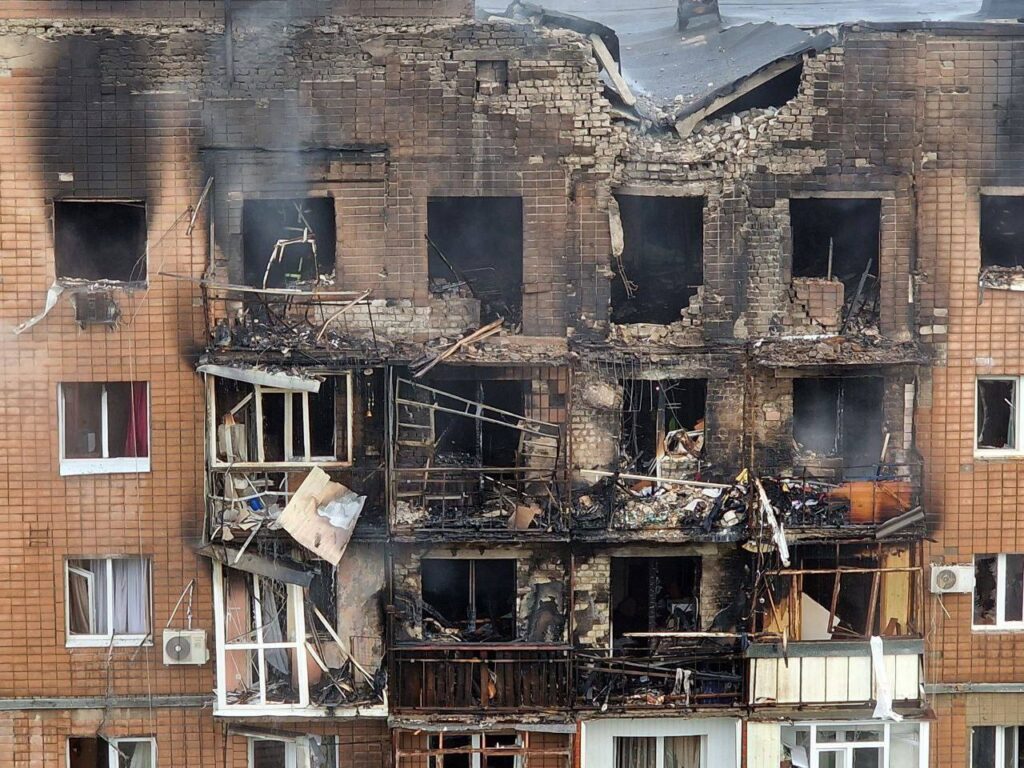

Every new Russian shelling of Kharkiv results in thousands of broken windows and damage, says Kharkiv’s mayor, Ihor Terekhov, UkrInform reports.
Russian attacks on Ukraine have intensified amid US President Donald Trump’s peace efforts, leading to a rising number of civilian casualties.
“Currently, the need for windows exceeds 50,000. Every strike increases this number by another thousand, one and a half, two. The record was more than five thousand in one attack,” the mayor reveals.
Municipal services promptly seal off the building envelopes to preserve heat and ensure residents’ safety. Some construction materials are provided by charitable organizations, but, according to Terekhov, the volumes are significantly less than in previous years of the war.
“We are receiving very little now from the funds. The assistance is shrinking, probably due to a lack of financial resources. And it’s not getting easier for us,” the mayor continues.
Volunteers actively help municipal workers eliminate the consequences of the strikes, especially in hard-to-reach buildings.
For example, in a 24-story building in the Saltivka district damaged during the night shelling on 12 June, construction materials had to be carried up manually because the elevators were without power.
The mayor also emphasizes that after each attack, Kharkiv residents unite and support the municipal and emergency services. He recalls an incident when, during a morning shelling on Hymnaziyna Embankment, a local resident brought sandwiches to workers clearing the damage.
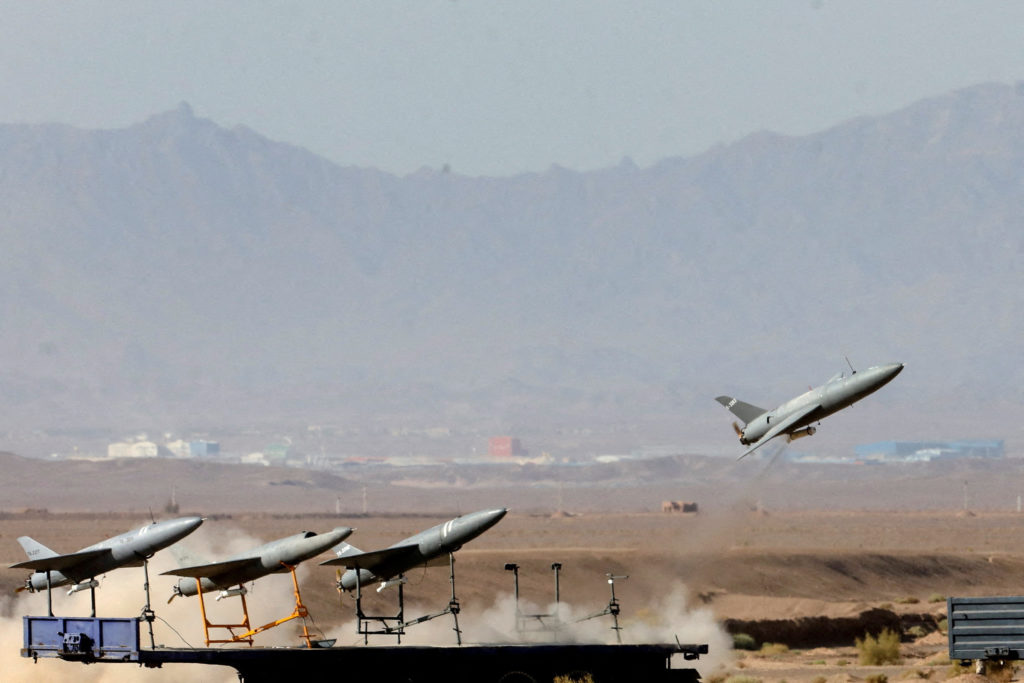

The Kremlin is losing one of its key bargaining chips in negotiations with Donald Trump. Political expert Abbas Galliamov says that for Ukraine, the collapse of the Islamic Republic of Iran is a promising prospect, as Tehran remains the closest ally of Russian ruler Vladimir Putin, Radio NV reports.
Negotiations between US Special Envoy Steve Witkoff and Iran over its nuclear program have yielded no results, much like the peace efforts to end the war in Ukraine. Despite several rounds of talks, Iran has refused to meet key US demands, particularly the suspension of uranium enrichment. At the same time, Russian attacks on Ukraine have intensified, leading to a rising number of civilian casualties.
“This is Putin’s closest ally. Ukrainians have seen enough of Iranian drones flying overhead. That alone is enough to wish those guys some serious trouble, which the Israel Defense Forces is currently delivering,” Galliamov explains.
According to him, Putin is losing a trump card in his dialogue with the US president.
“Up to now, there’s been a kind of trade-off: Ukraine in exchange for Iran. Trump would say to Putin, ‘Fine, I won’t put too much pressure on you over Ukraine for now, but in return, I need your support on Iran,’” Galliamov explains.
Once the Iranian nuclear issue is resolved, especially if the Iranian regime falls, Trump will have no need to seek Putin’s support in that arena.
Earlier, Israeli Prime Minister Benjamin Netanyahu called the first wave of airstrikes on Iran “very successful,” UNIAN reports.
Israeli military sources clarify that among those killed in the attack were former head of Iran’s nuclear agency Fereydoon Abbasi, nuclear scientist Mehdi Tehranchi, and physicist Abdolrahim Minuchehr.
During the first wave of Israeli strikes on Iran’s nuclear facilities, the commander of the Islamic Revolutionary Guard Corps (IRGC), Hossein Salami, may have also been eliminated.
Russia emerges as potential mediator in Trump’s new Iran nuclear deal talks
An Israel Defense Forces spokesperson states that other Iranian commanders and leading scientists involved in nuclear development may also have been killed as a result of the Israeli strikes.
Supreme Leader Ayatollah Ali Khamenei later acknowledged the deaths of several high-ranking military officials and nuclear scientists in the Israeli attacks. Iran’s armed forces had earlier vowed a “firm response” to the Israeli assault. Khamenei declared he was giving full freedom of action to the military to answer the strike.


Russian forces are heavily bombarding Ukraine’s second defensive line in Donbas northeast of the city of Pokrovsk with precision airstrikes, with OSINT analyst Clément Molin reporting nearly 1,000 recent hits in a narrow section of the frontline.
Russian Aerospace Forces are actively conducting intense aerial preparation against Ukrainian positions between Pokrovsk and Kostiantynivka in Donetsk Oblast.
According to OSINT analyst Clément Molin, satellite imagery shows around 950 airstrikes across fields and forest strips near the Ukrainian defense line. These strikes began around 25 May, following recent Russian territorial gains in the area.
Thos airstrikes are very recent, they started around may 25, less than 20 days ago after russian troops made gains on the Pokrovsk-Kostiantynivka defensive line.
— Clément Molin (@clement_molin) June 12, 2025
You can see here how ukrainian positions disapear after repeated airstrikes. pic.twitter.com/1Ht1lxwsNK
Molin posted on X:
“I located nearly 1 000 airstrike[s] on a small area of the frontline between Pokrovsk and Kostiantynivka. This is simply massive.”
He added that the attacks are focused on treeline areas in response to a shift in Ukrainian tactics that favors smaller, concealed positions. The bombardment is especially intense on the western edge of the Pokrovsk-Druzhkivka-Kostiantynivka triangle.

Molin stated that Ukrainian positions near Pokrovsk appear stronger, requiring more force to neutralize. He suggested a possible attempt by Russian forces to encircle Pokrovsk from the eastern flank:
“Russia could reactivate the western Pokrovsk front while launching assault on the eastern side.”
He noted that such activity could support an objective to capture Pokrovsk and Kostiantynivka before 2026.
Russia could reactivate the western Pokrovsk front while launching assault on the eastern side.
— Clément Molin (@clement_molin) June 12, 2025
-> This could help them reaching the objective of capture of Pokrovsk and Kostiantynivka before 2026. pic.twitter.com/TL4QOTlmca
This is not the first time such intense airstrike concentrations have been recorded. Molin referenced previous instances in Robotyne in 2023 and Kursk in 2024. He also observed similar patterns in Sumy Oblast, where forest zones north of the city are being targeted as Ukrainian forces resist Russian advances.
Militarnyi, citing the Ukrainian Army General Staff, reports that the situation in the Pokrovsk axis remains “difficult.” On 11 June alone, Ukrainian defenders reportedly repelled 62 separate Russian assault actions. These clashes occurred near multiple settlements, including Malynivka, Myroliubivka, Yelyzavetivka, Lysivka, Novoukrainka, Zvirove, Kotlyne, Udachne, Novosergiivka, Orikhove, Andriivka, and toward Poltavka, Oleksiivka, and Muravka.


Militarnyi reported that following Ukraine’s operation Spiderweb that targeted Russian strategic bombers at five bases, Russia was forced to redeploy key elements of its strategic aviation fleet to airbases in the Far East, complicating its ability to launch missile strikes on Ukrainian territory.
Amid the ongoing Russo-Ukrainian war, Moscow has been extensively using its strategic bomber fleet—originally intended as part of its nuclear deterrent—for launching conventional cruise missiles against Ukraine. Earlier this month, a coordinated Ukrainian drone strike destroyed a double-digit number of Russian bombers, delivering a significant blow to Russia’s capacity for large-scale air-launched missile attacks.
According to OSINT sources, including the Tracking Telegram channel, two Tu-160 bombers previously based at Belaya airbase were relocated to the Anadyr airfield. An additional five Tu-160s were moved to Yelizovo airbase. These facilities are located 6,770 km and 7,250 km from Ukraine respectively.

Meanwhile, Tu-22M3 bombers based at Olenya are periodically transferred to Sovetsky airfield in the Komi Republic, approximately 2,400 km from Ukrainian borders. Tu-95MS aircraft now operate between Olenya, Engels-2, and Ukrainka airbases.
For launching Kh-101 cruise missiles, Tu-95MS bombers stationed at Ukrainka must fly at least 7,000 km to reach launch areas near Saratov Oblast, and then return another 5,400 km. This creates a 12,400 km mission round trip, lasting up to 23 hours in the air.
Russia’s dispersal of its strategic bombers aims to reduce vulnerability by spreading aircraft across remote airbases. However, this has introduced significant complications, including excessive flight time, accelerated wear of aging airframes, heightened crew fatigue, and increased maintenance costs, Militarnyi notes. The added distance also increases the likelihood of technical failure or human error, raising the risk of crashes.
The strain on Russian aviation logistics could in the long run reduce the frequency of air-launched cruise missile strikes on Ukraine.
On 1 June 2025, the Security Service of Ukraine (SBU) launched Operation Pavutyna (“Spiderweb”), a large-scale special operation targeting Russia’s strategic bombers. The targets included Belaya, Ivanovo, Ukrainka, Olenya, and Dyagilevo airbases.
Militarnyi says preliminary assessments indicate that at least 8 Tu-95MS (or Tu-95MSM), 12 Tu-22M3, 2 A-50 early warning aircraft, 1 An-12 transport plane, and possibly 1 Il-78M tanker were hit by Ukrainian drone strikes.
Russia’s Tu-160 bomber use in missile attack last night proves Tu-95 shortage after operation Spiderweb, Militarnyi says
Though a full set of satellite images has not yet been published. Notably, the strike on one Tu-95MS seen in satellite imagery is not included in the videos.
“In addition, the video footage released by the SBU is incomplete: it does not show the damage to one of the Tu-95MS aircraft, which is visible in satellite images,” Militarnyi wrote.
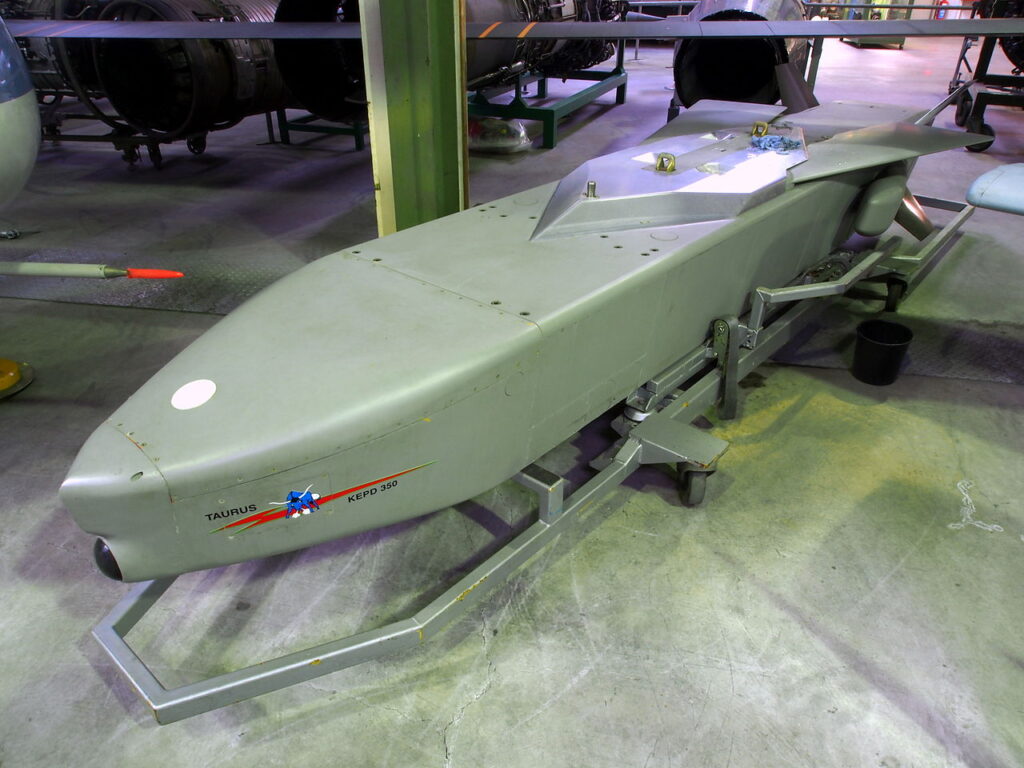

Germany will not supply Ukraine with long-range Taurus cruise missiles, Defense Minister Boris Pistorius confirmed during a visit to Kyiv on 12 June.
Speaking at a joint briefing with Ukrainian President Volodymyr Zelenskyy, Pistorius gave a direct response when asked about potential missile deliveries amid intensifying Russian attacks on Ukraine.
“You asked me whether we are considering this, I answer you — no,” Pistorius stated.
Former Chancellor Olaf Scholz categorically opposed providing the cruise missiles to Ukraine, arguing that such transfers risked drawing Germany directly into the Russian-Ukrainian war. In late 2024, Scholz said that “a German missile that can reach Moscow” and this would carry unacceptable risks.
Merz, by contrast, supported supplying these weapons systems to Ukraine even before assuming the chancellorship. He defended his position claiming that this step would significantly enhance Ukraine’s ability to strike Russian military targets and supply lines up to 500 km (310 miles) away, helping it defend against Russia’s unlawful aggression.
Pistorius also stated that Germany plans to allocate €9 billion in military aid to Ukraine for 2025, with portions of this funding designated for long-range weapons production.
“Supporting Ukraine is the task of all European peoples. We must take responsibility and recognize that this is not only Ukraine’s defense. Ukraine is fighting this war to ensure peace in Europe, so helping is our common task,” Pistorius stated.
Pistorius emphasized the effectiveness of Ukrainian drone technology and the technological expertise Ukraine has developed during its defense against Russian aggression.
“We all must learn from this. And I think that in the industrial sector we must also develop. Therefore, it’s about joint ventures that we want to build. We want more of these joint ventures both in Germany and in Ukraine in order to produce weapons faster for the common good and thus strengthen deterrence potential and defense potential,” he explained.
Zelenskyy and Pistorius discussed localizing air defense system production in Ukraine and agreed on additional investments in defense manufacturing. The leaders committed to expanding joint weapons production in both countries.